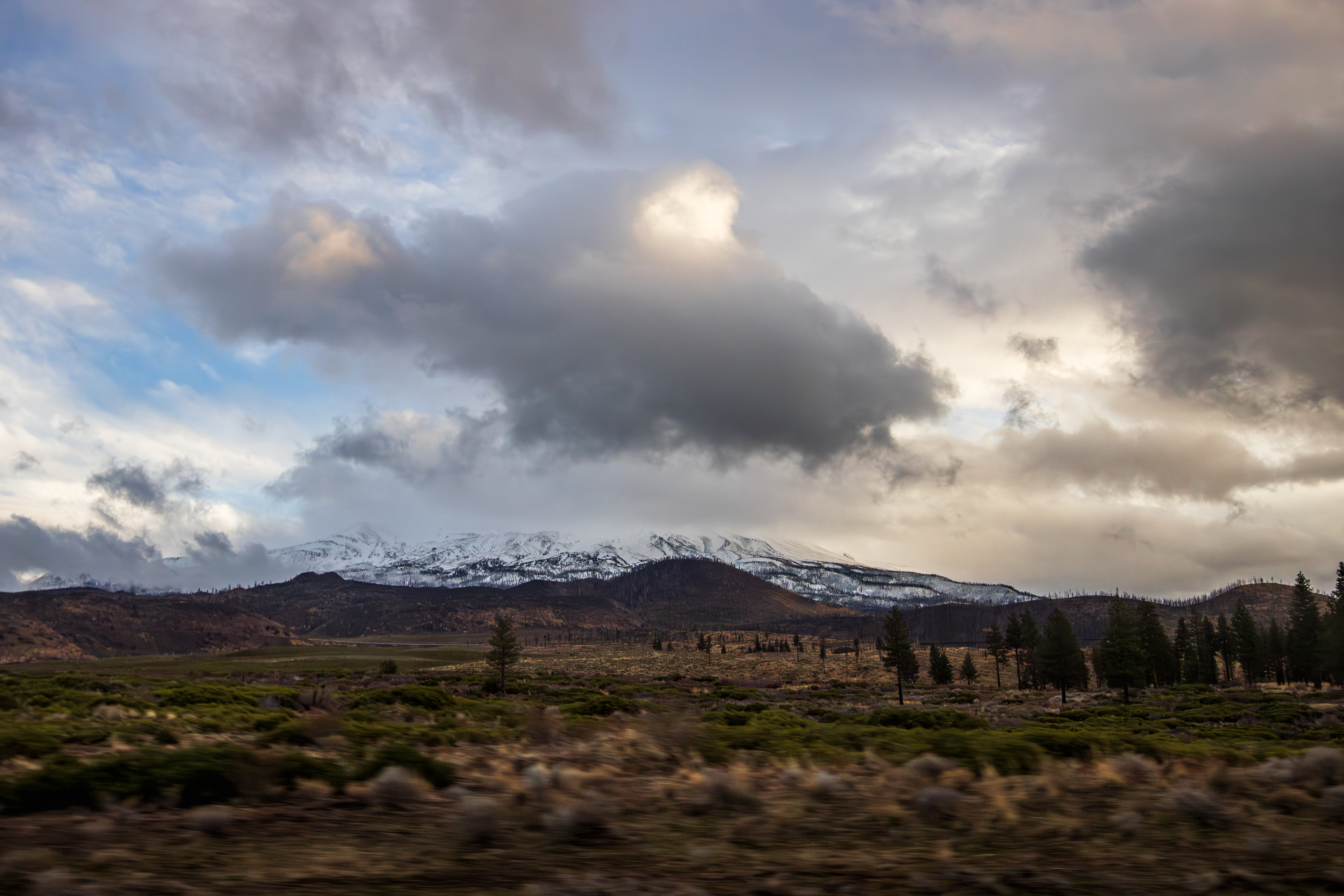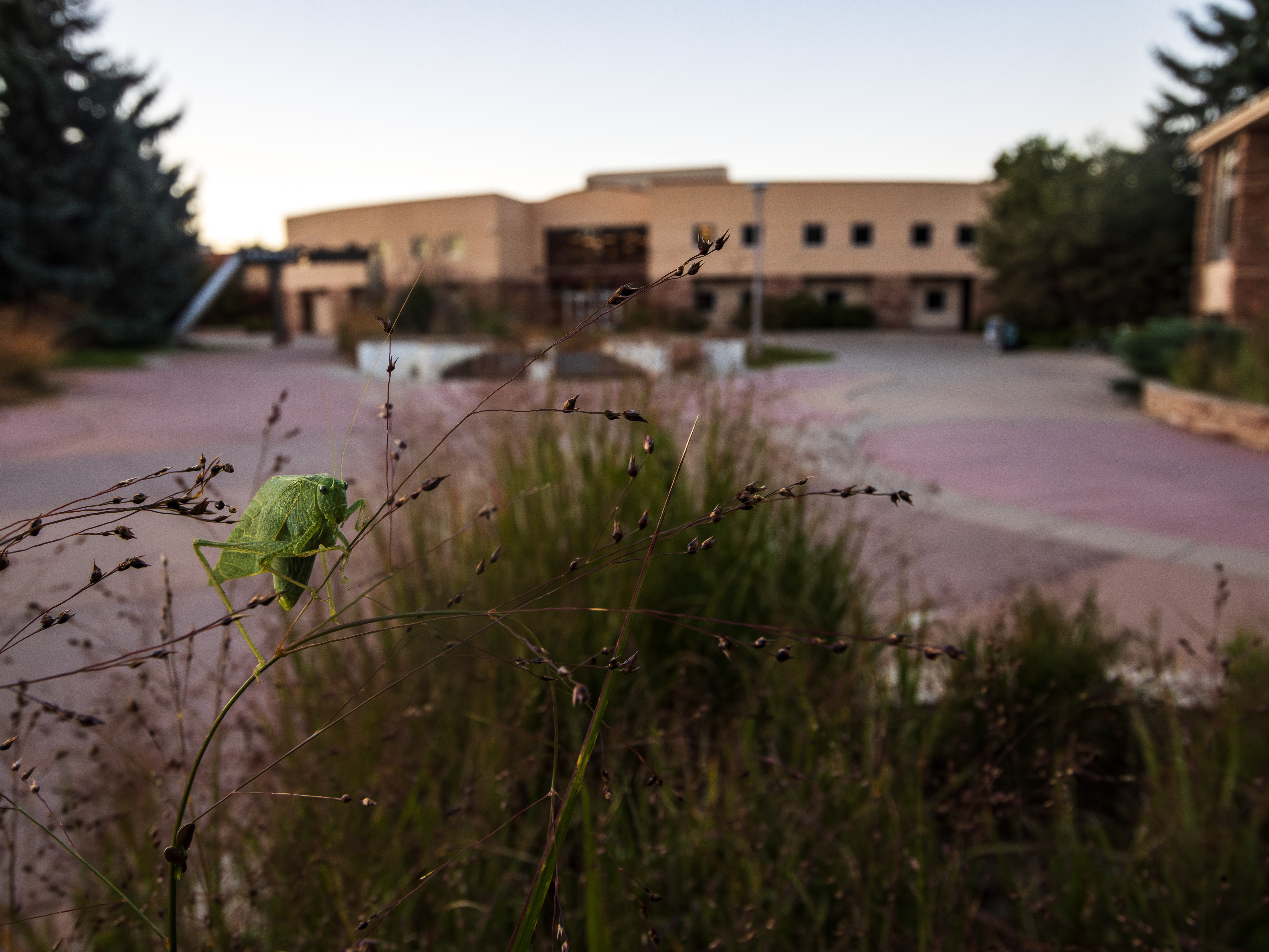I spent a lot of time in 2024 traveling. I traveled across the US, spent months at the southern tip of South America, and spent a week in Antarctica. I feel it was fitting to spend the last few days of 2024 and the first few days of the new year traveling through Northern California with my partner, Annika. It was partially a birding trip but also served as a sightseeing trip and a few days to spend with Annika and her family. Birds were seen, photos were taken, good times were enjoyed.

Flying over the cloudy California coast
The trip began, as so many do, with a short flight up the California coast to San Francisco, where I would be spending the night. I had strategically picked a window seat on the left side of the plane, knowing it would give me views looking out over the Pacific Ocean and the coast. It paid off and every time I looked up from my book (The Way of Kings. I highly recommend it if you haven't read it), I was treated to an incredible view.
Only a little more than an hour later I found myself in San Francisco, where I was picked up by Annika and settled in at her place for the night. She had a brief errand to run and I took the time to enjoy the incredible diversity of birds visiting her feeder. Chestnut-backed Chickadees, a Bewick's Wren, and a Townsend's Warbler were just some of the birds I was able to spot visiting the feeder. Despite the deep shadows cast by the towering redwoods and the nearby hills, I was able to capture some incredible images of these birds.
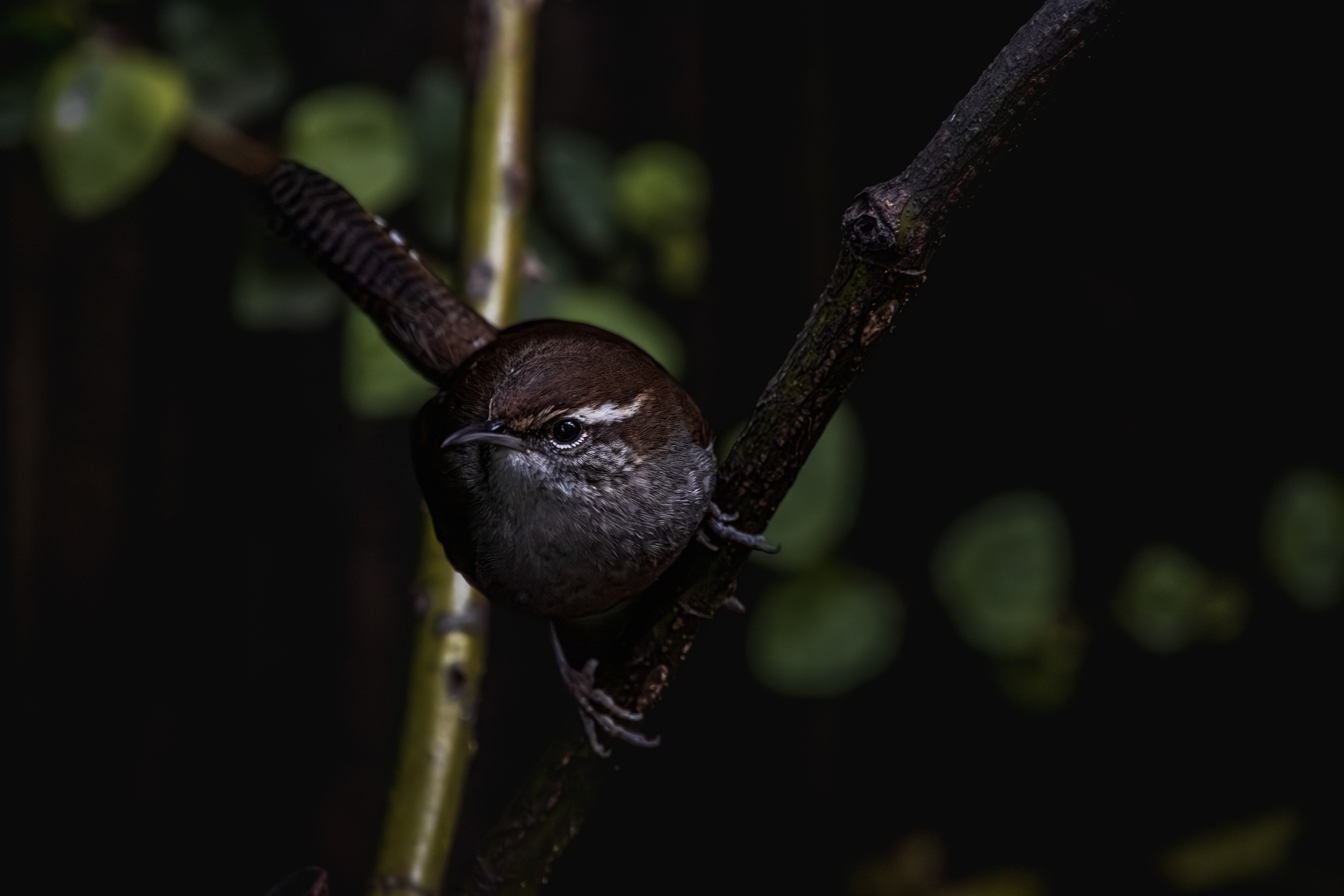
Bewick's Wren
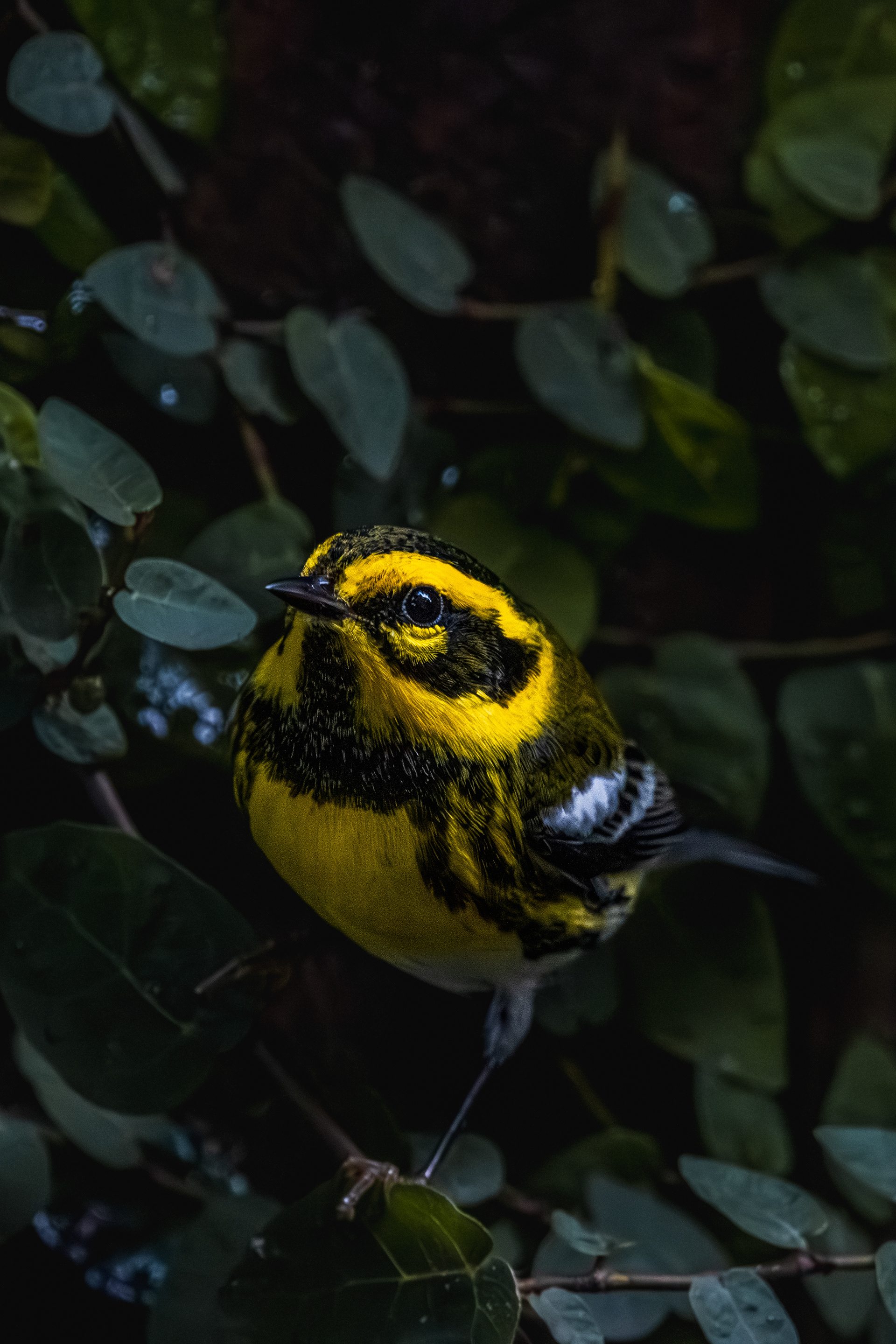
Townsend's Warbler
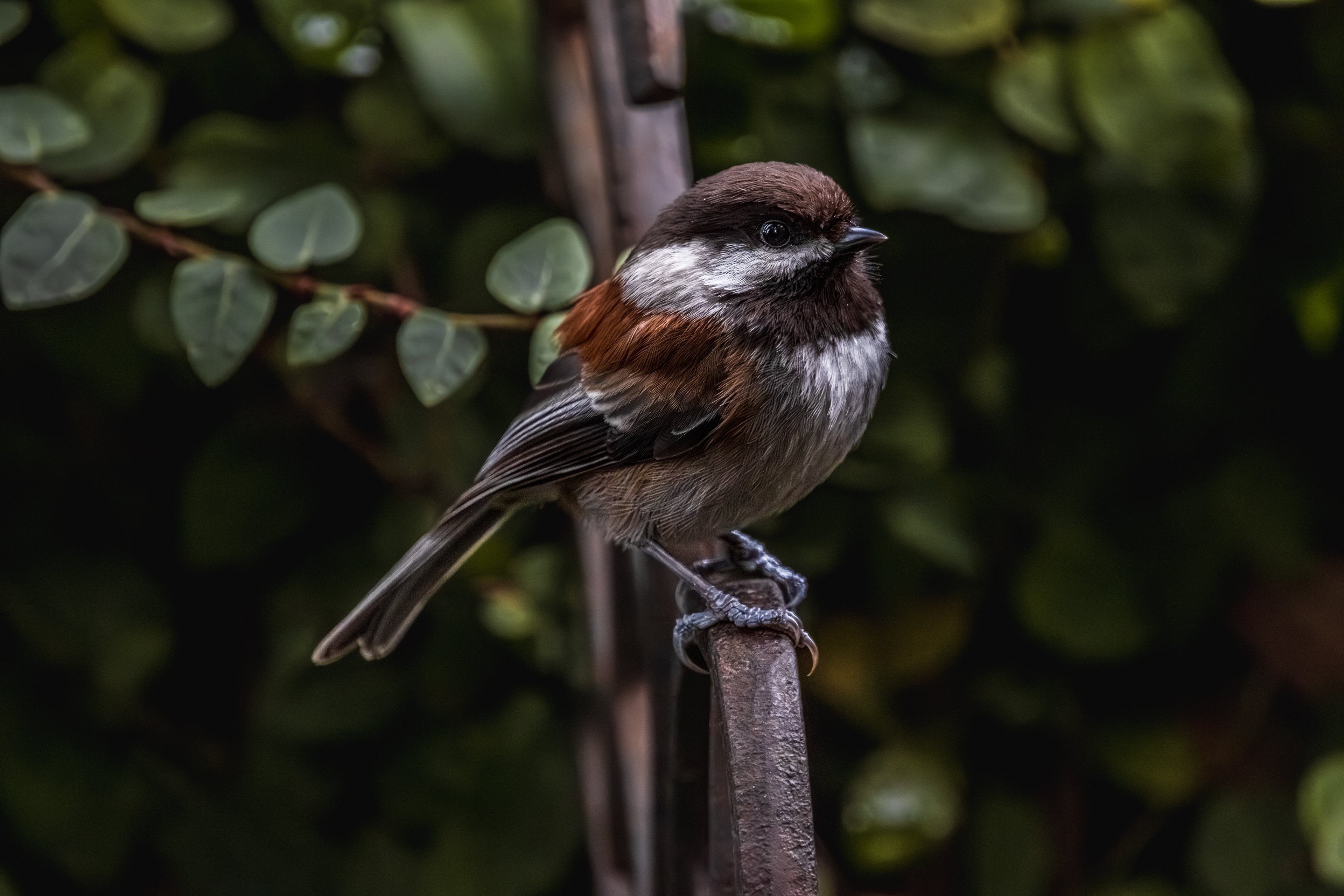
Chestnut-backed Chickadee
After Annika finished her errand, we headed to Tennessee Valley, a local hike through the coastal hills to the Pacific coast. Our sunset hike was gorgeous, the hills cast in the rosy hues of a classic California sunset. The valley was a mix of native shrubland interspersed with coast live oak and a riparian corridor dominated by introduced eucalyptus trees and willows. This made for a good birding experience, as we could hear the song of the Wrentit echoing from the hills around the valley and find numerous sparrows along the stream. Towards the end of the hike, the stream empties into a small marsh before ultimately draining into the Pacific Ocean. This marsh afforded even more new species, including Marsh Wrens and Virginia Rails. By the time we reached the coast, however, it had grown dark enough that it was difficult to locate and identify much, though we were able to spot a few Brandt's Cormorants roosting on the rocky cliffs and enjoy the majesty of the coast.
The hike back was far less exciting, since darkness had fallen and the birds had quieted down for the evening. Upon returning to the parking lot, we headed back to town for dinner at a pub along the bay. I had a chicken sandwich and some garlic fries, which were both quite delicious.
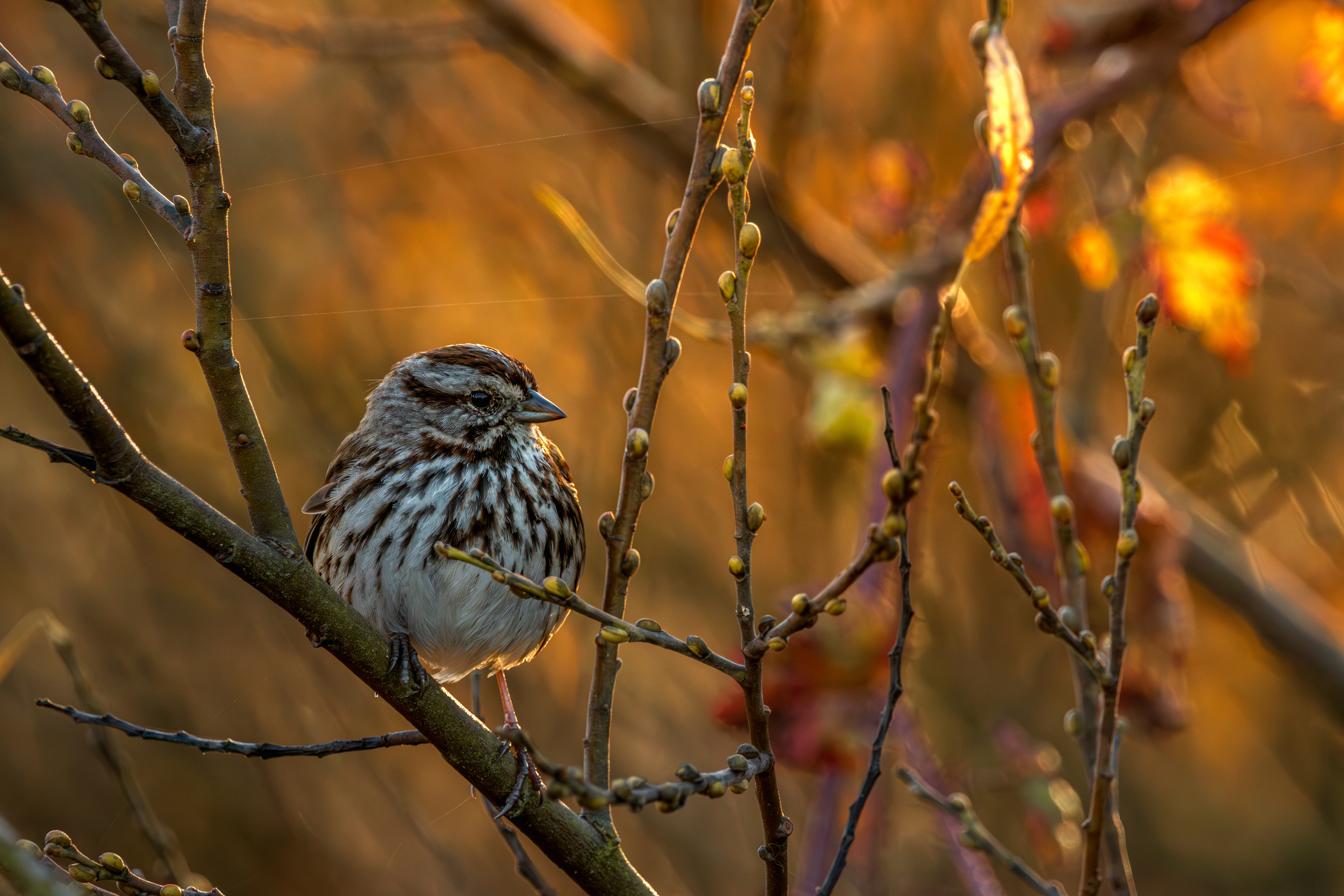
Song Sparrow at golden hour
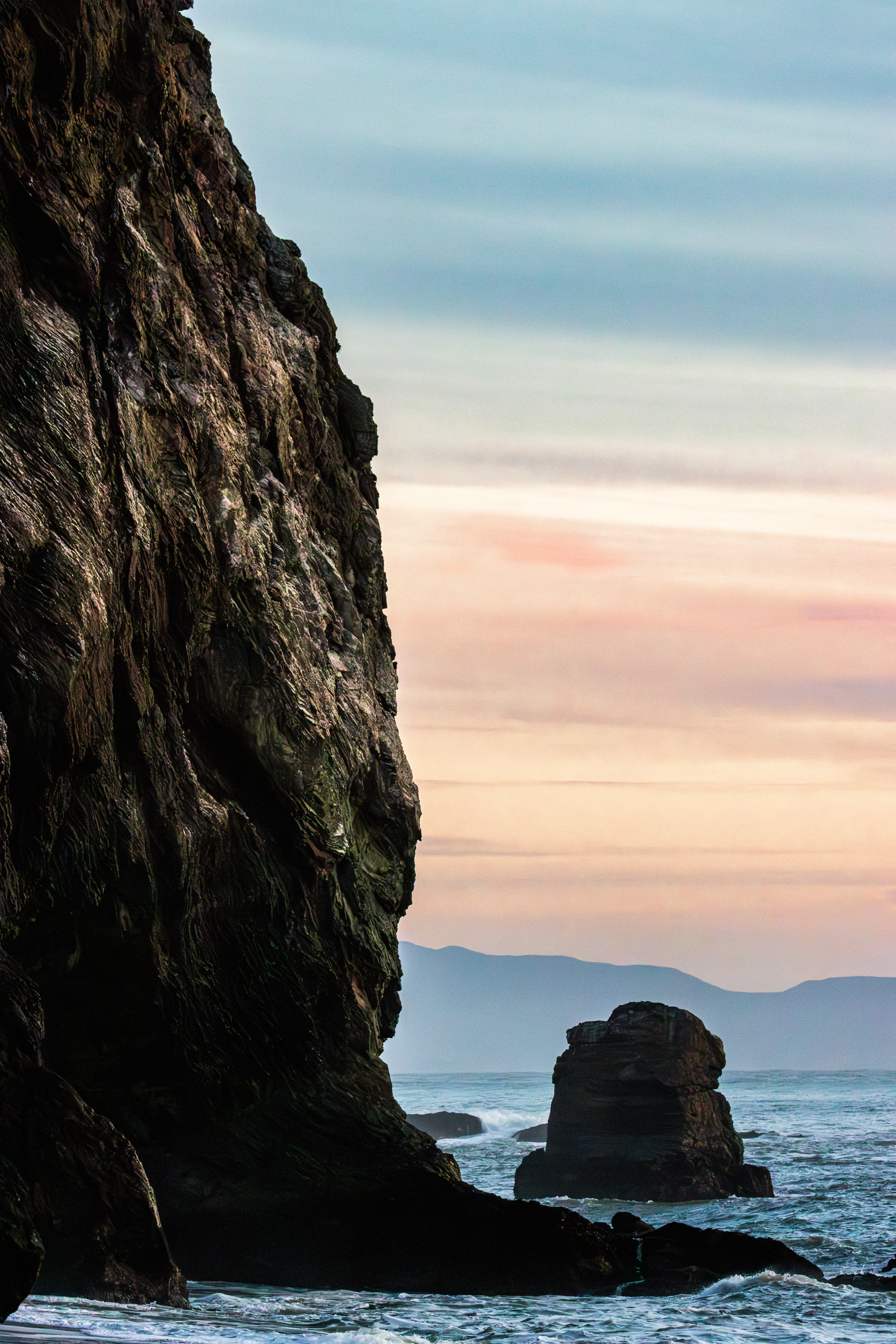
The rocky California Coast
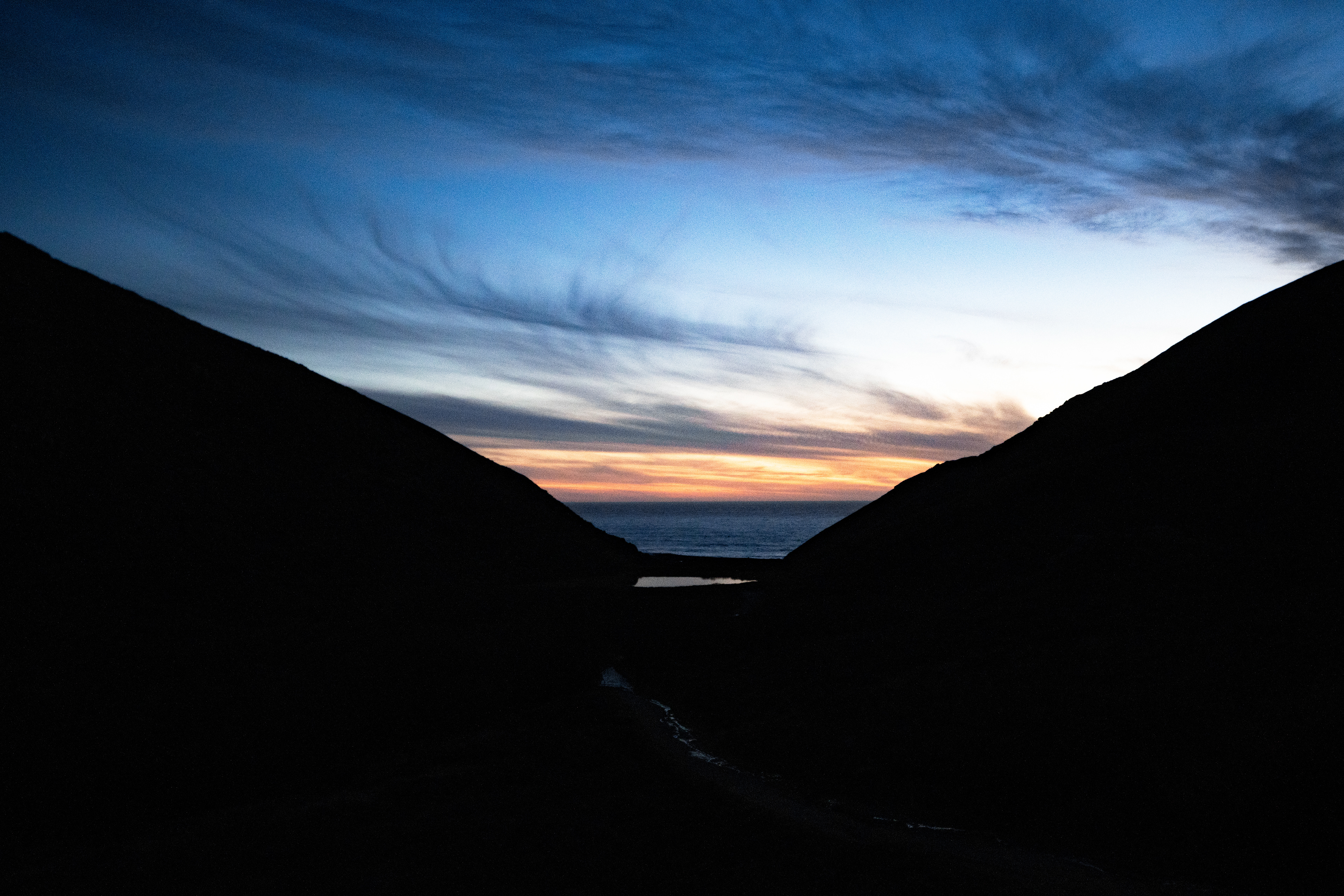
Sunset from the Tennessee Valley
The following day, we would be driving from San Fransisco to Mt. Shasta, where we would spend the next few days. However, we had decided to get a later start and I took the opportunity to wander up into the canyon. Boy, am I glad I did. After less than a mile of walking, I spotted a bird I had only hoped to see: the incredibly gorgeous varied thrush, a bird with vibrant orange, black, and blue coloration. Native to the Pacific Northwest, I had never spent enough time there as a birder to spot one of these often elusive birds. While the dark conditions of the canyon made it impossible to capture a good photo of the thrushes, it made the walk up the canyon incredibly satisfying.
Eventually we hit the road, first heading east and then north. Along the way, we did some highway birding at 70 miles per hour, spotting hawks, ducks, and a plethora of egrets. We also took a brief detour off the highway to look for Yellow-billed Magpies and while we didn't end up stopping anywhere, we did spot a pair at the top of a tree as we were getting back on the highway. Eventually, we reached our main stop for the day: Sacramento National Wildlife Refuge.
Sacramento National Wildlife Refuge and the rich agricultural lands surrounding it host a sizeable percentage of the global population of Snow Geese and thousands of Ross's and Greater White-fronted Geese. Raptors of all varieties flew around and numerous grassland passerines foraged along the road. It was incredible to see such a diversity of species, especially in the winter. We were even treated to some small surprises, including a loggerhead shrike and a flock of long-billed dowitchers. However, after completing the auto tour, we had to get back on the road and head further north. As we did, the weather steadily turned from sunshine to overcast and drizzly, a sign of what was to come.
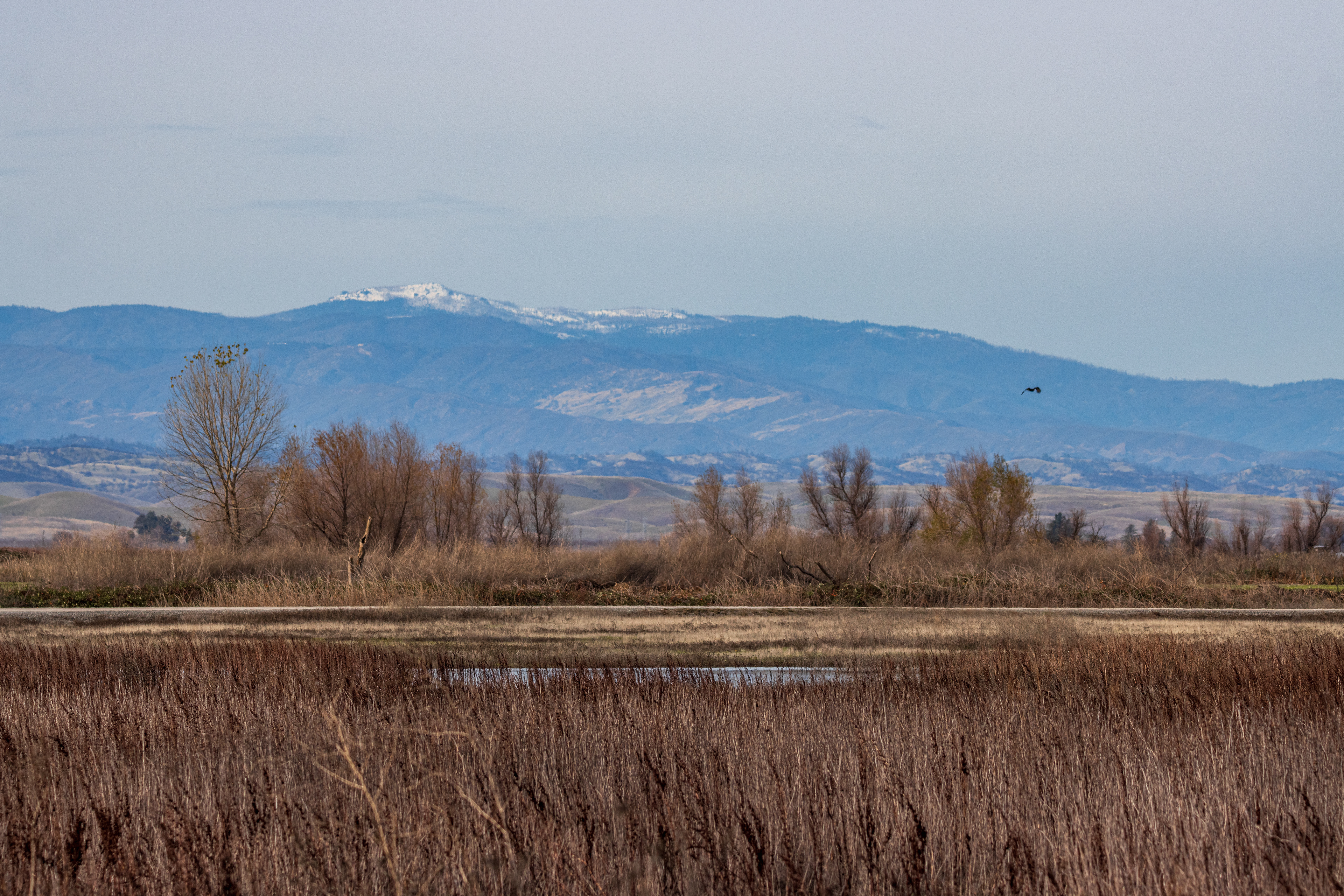
The views from Sacramento National Wildlife Refuge
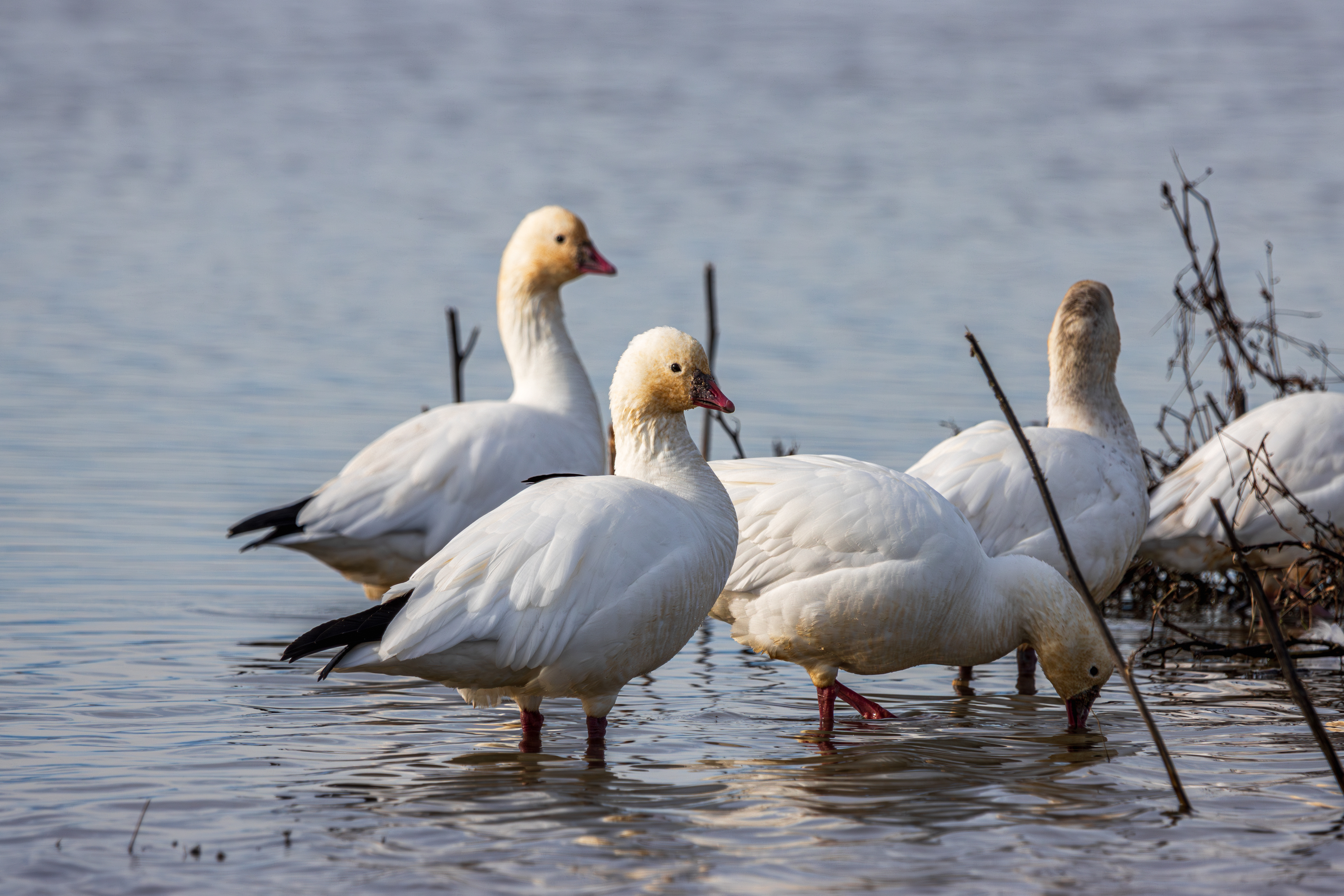
A flock of Ross's Geese
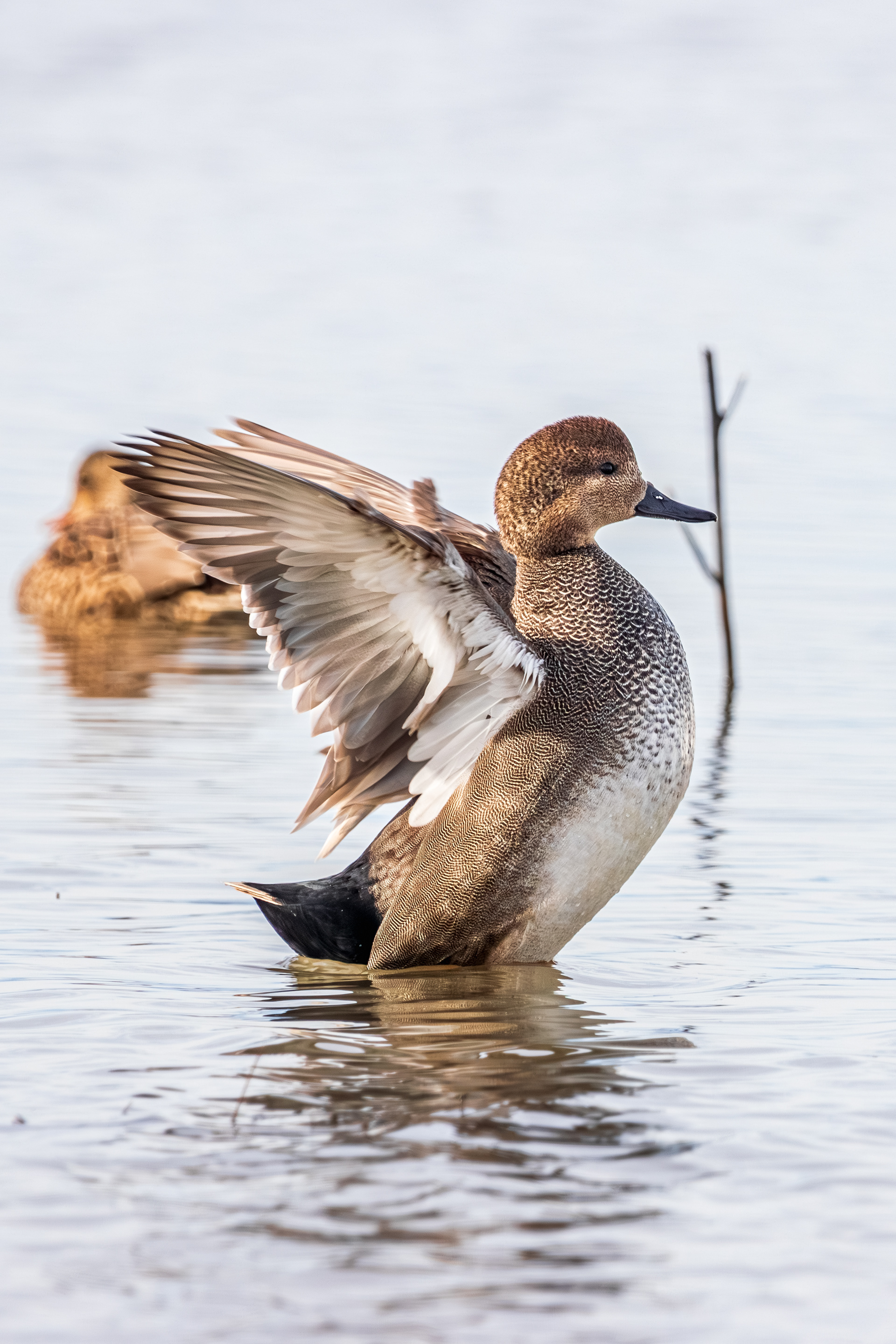
Male Gadwall flapping its wings
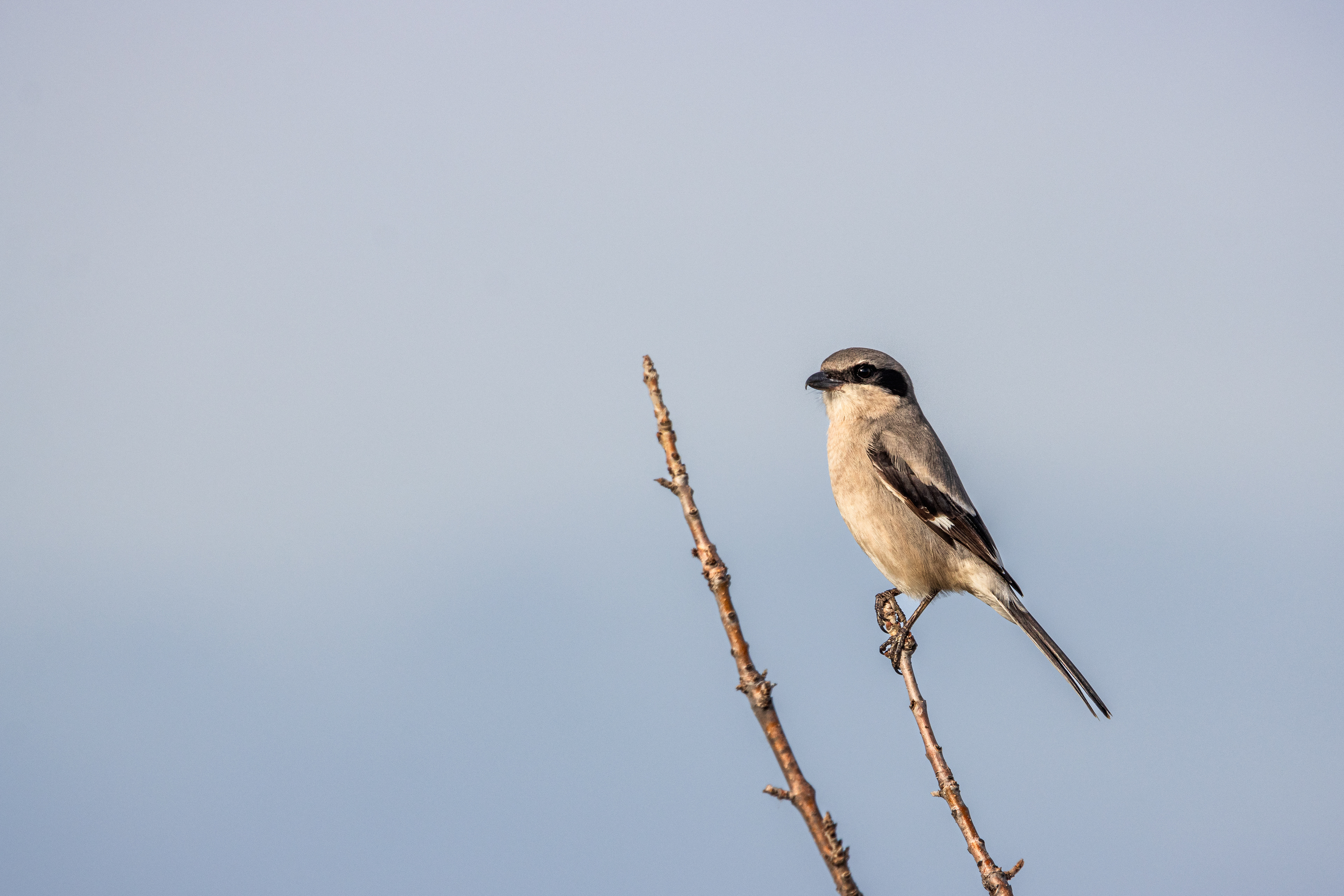
Loggerhead Shrike
The next day was my first full day up in the Mt. Shasta area and the first day of 2025, which is always an exciting day for a birdwatcher. Suddenly, even the most common species become exciting again as you see them for the first time in the new year. Annika and her family wanted to spend the morning skiing at the local ski park and, since I didn't have my skis, I decided to spend the morning birdwatching in the resort parking lot. While it was cold and snowing, I reveled in the conditions, as they made for excellent photography conditions. A group of Common Ravens flew around the parking lot, occasionally perching to offer excellent, snowy images. Pine Siskins flew about, though they never provided any opportunities to take photographs. A group of unknown finches flew into a nearby group of firs. But, the real star of the morning was undoubtedly the three white-headed woodpeckers I managed to find. These birds seemed attracted to the plentiful cone crop of the knobcone pines that lined the parking lot and their close proximity afforded excellent photos.
After returning from the ski resort, the rest of the day passed largely uneventfully, with the rainy weather where we were staying providing ample encouragement to stay indoors. Fortunately the rain slowed a bit in the late afternoon and we took a short walk around town, finding a number of good birds throughout town, including some cooperative Golden-crowned Sparrows.
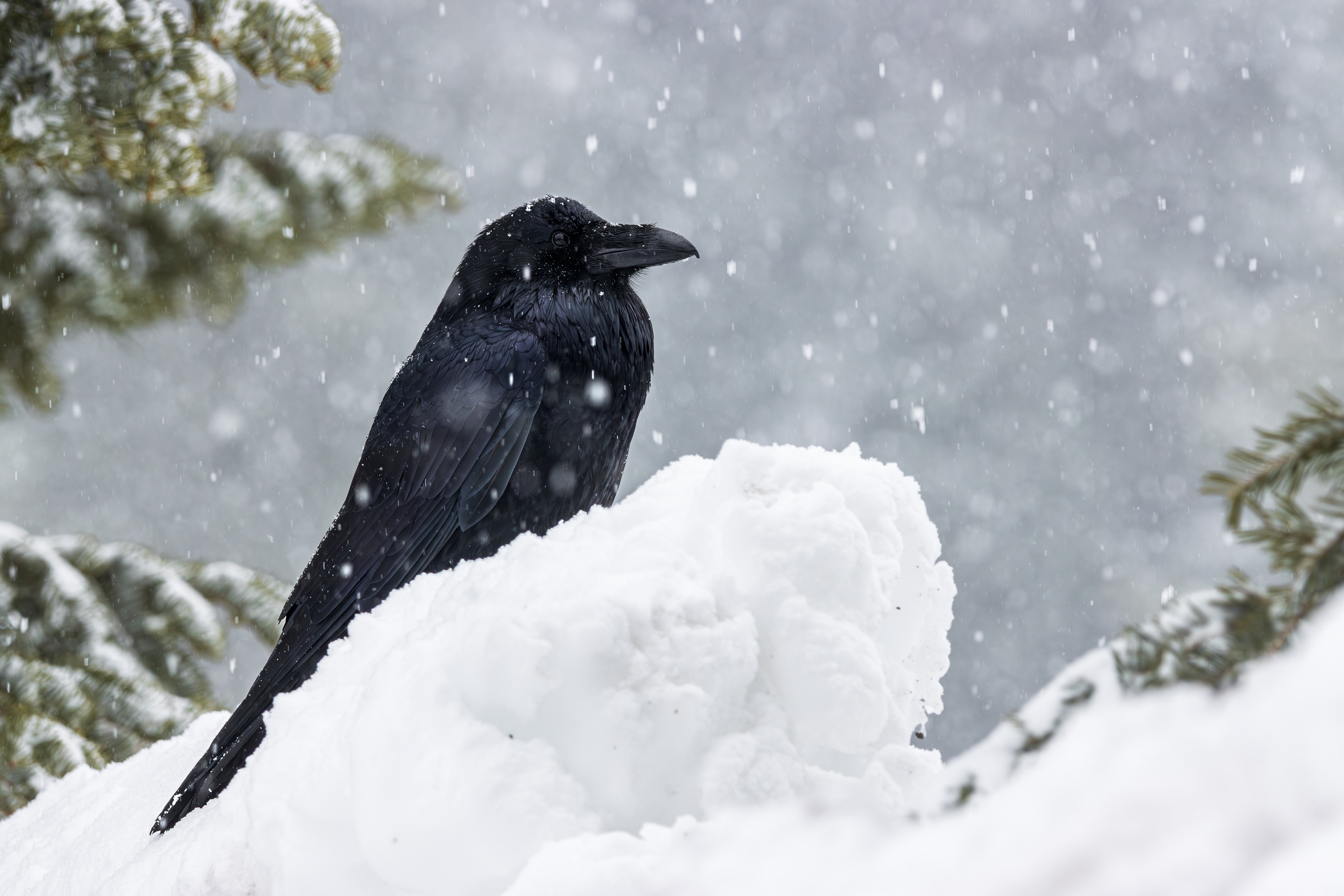
Common Raven in the snow
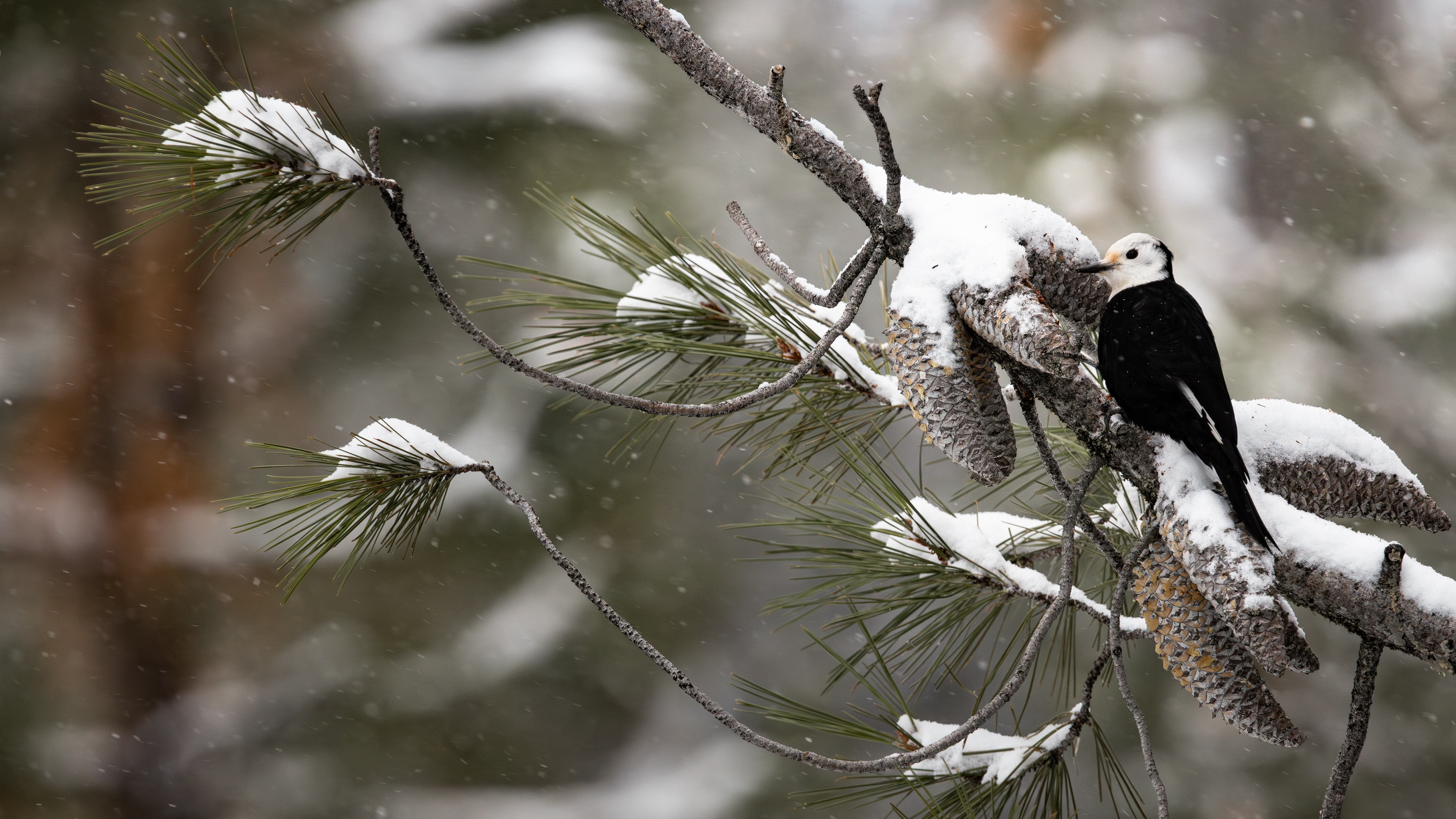
Female White-headed Woodpecker enjoying the knobcone pinecones
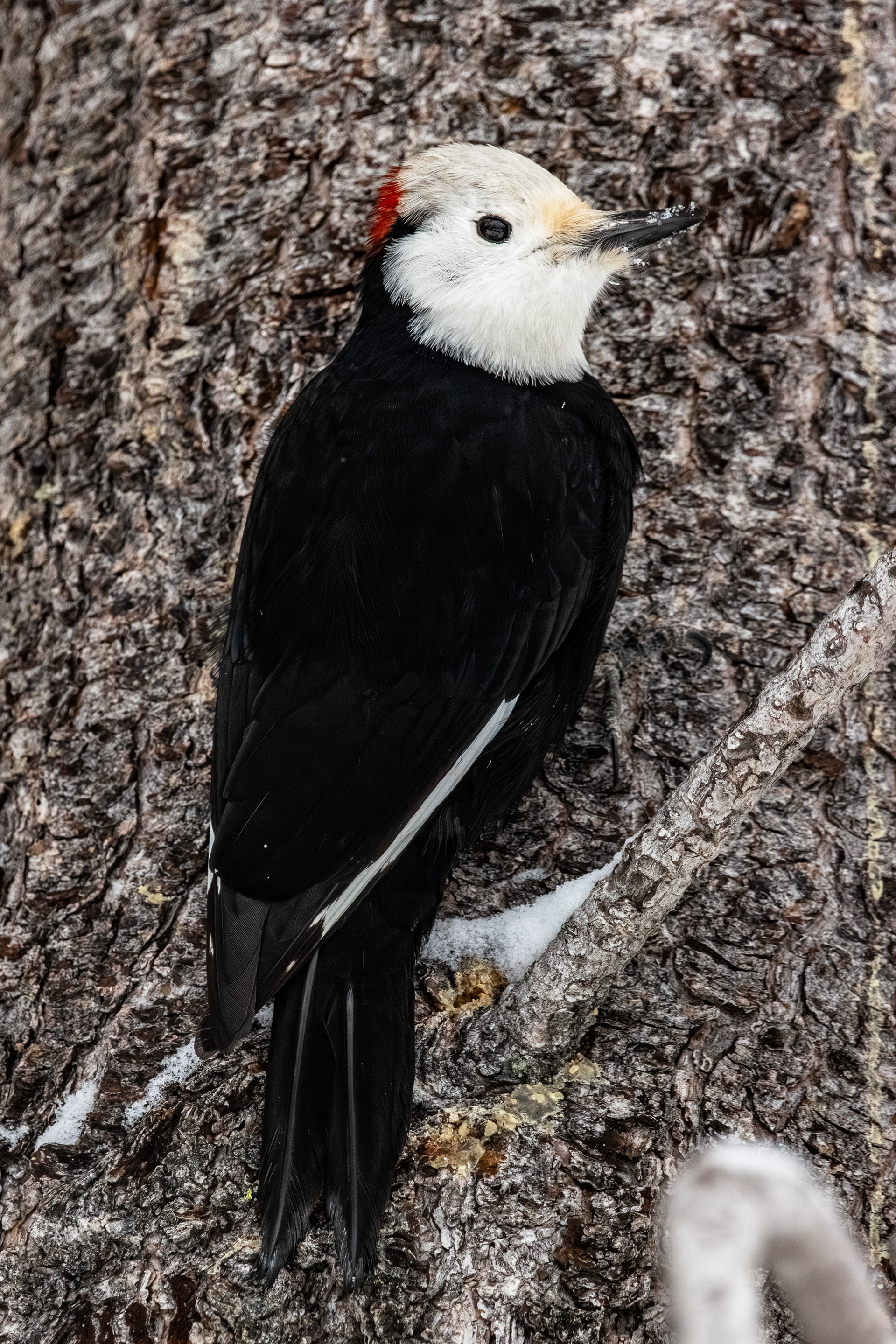
Male White-headed Woodpecker
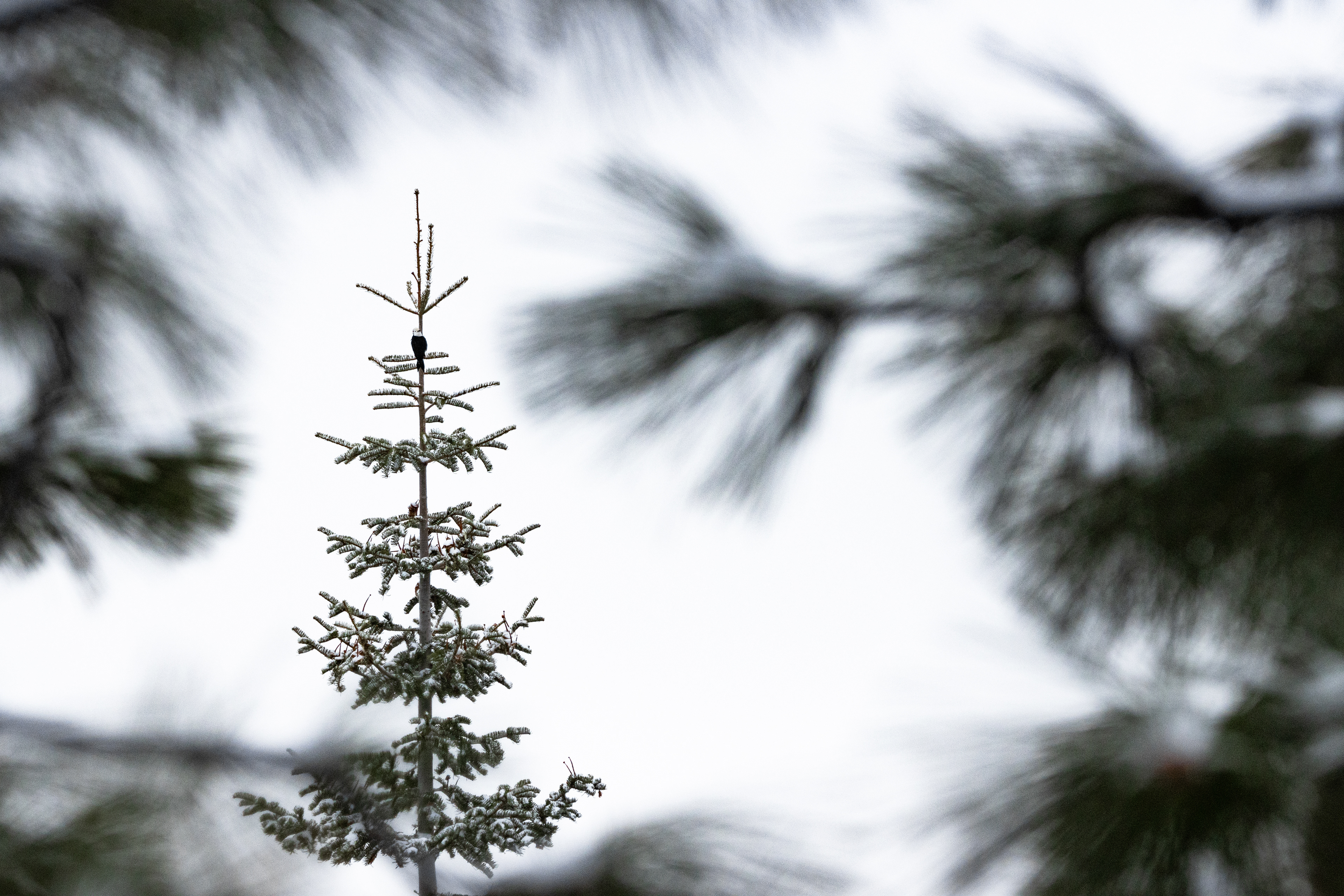
White-headed Woodpecker photographed through some pines
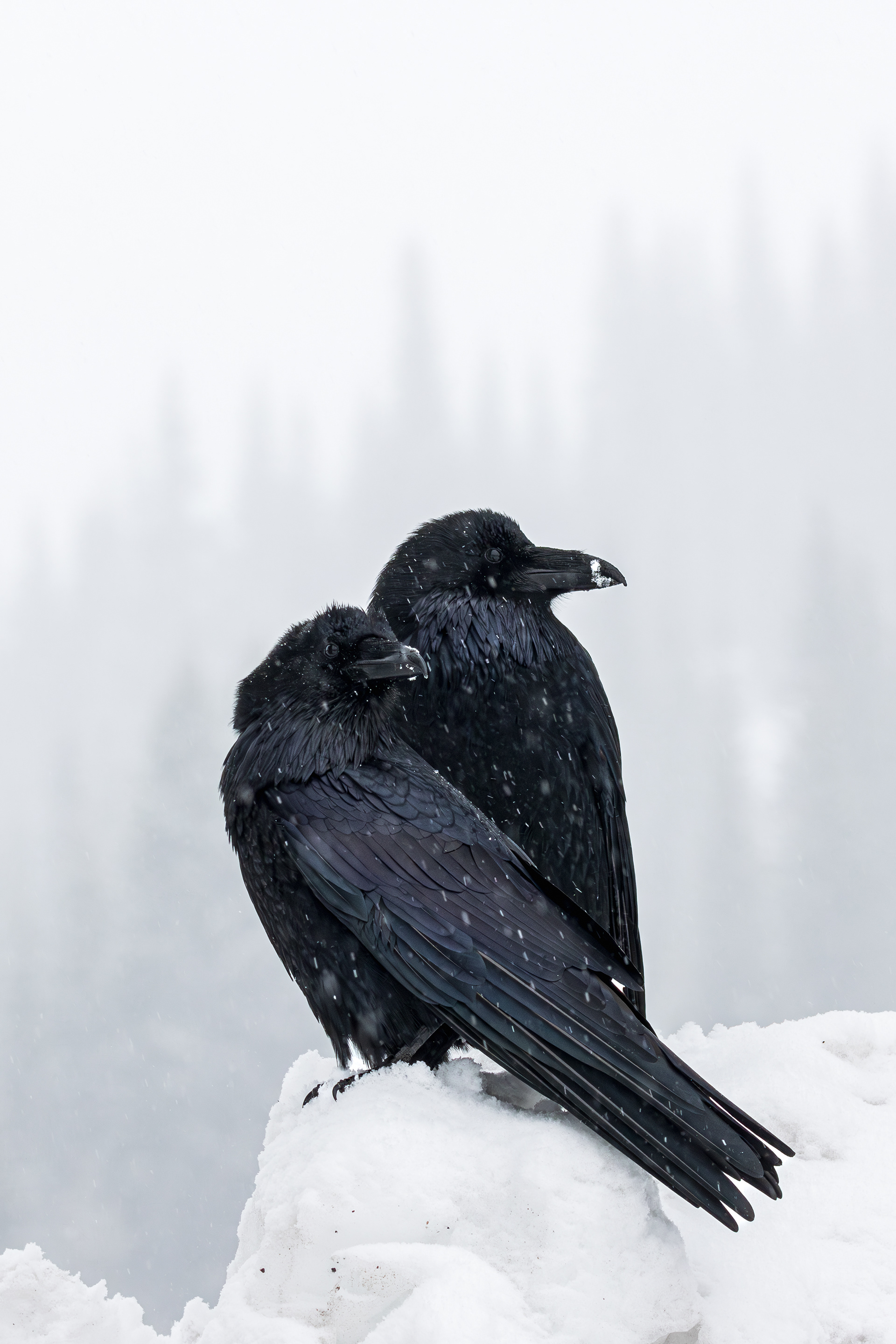
A pair of Common Ravens
The following day was a lot more adventurous and, despite dreary weather, we set out for the slopes of Mt. Shasta, planning to do a short snowshoe up at around 7,000 feet. It was a brutal day for it, especially seeing as I had never done any snowshoeing before. It was cold and snow lay thick on the ground from recent storms, but it wasn't cold enough to be snowing so we just had frigid rain falling on us the whole way up the trail to the old Sierra Club hut. The rain and fog made it nearly impossible to capture photos, as any time I took my camera out, the lens would immediately get covered in water. Eventually, I gave up on my main camera and swapped to the GoPro, hoping it would be easier to keep dry (it wasn't). Despite the poor conditions and the difficult, we had a great time, I managed to capture a few photos, and we even spotted some birds. That said, I highly recommend not climbing 1000 feet for your first snowshoeing experience, especially on an empty stomach. Coming down was definitely a lot easier both mentally and physically than going up.
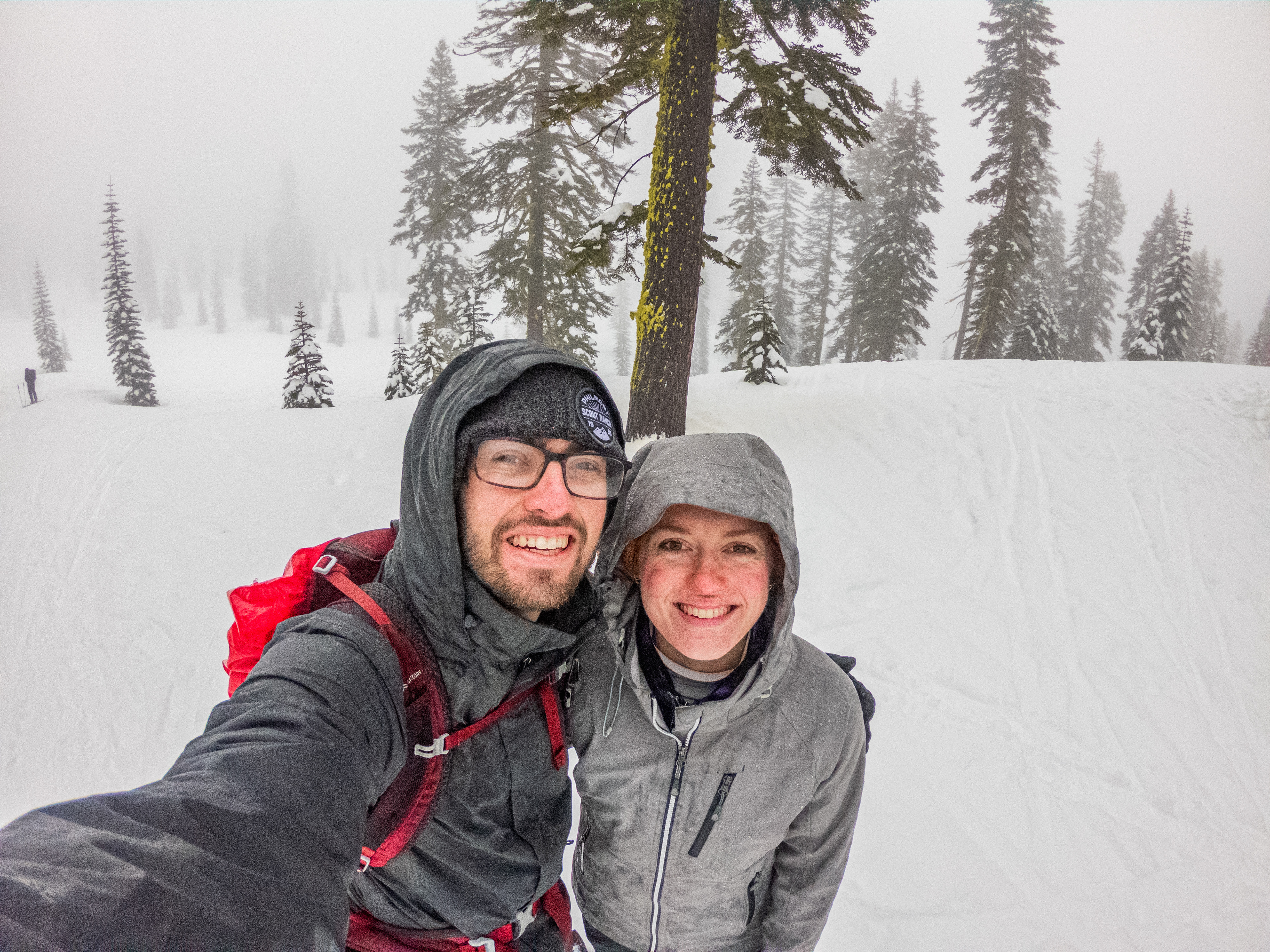
Annika and I towards the end of the hike
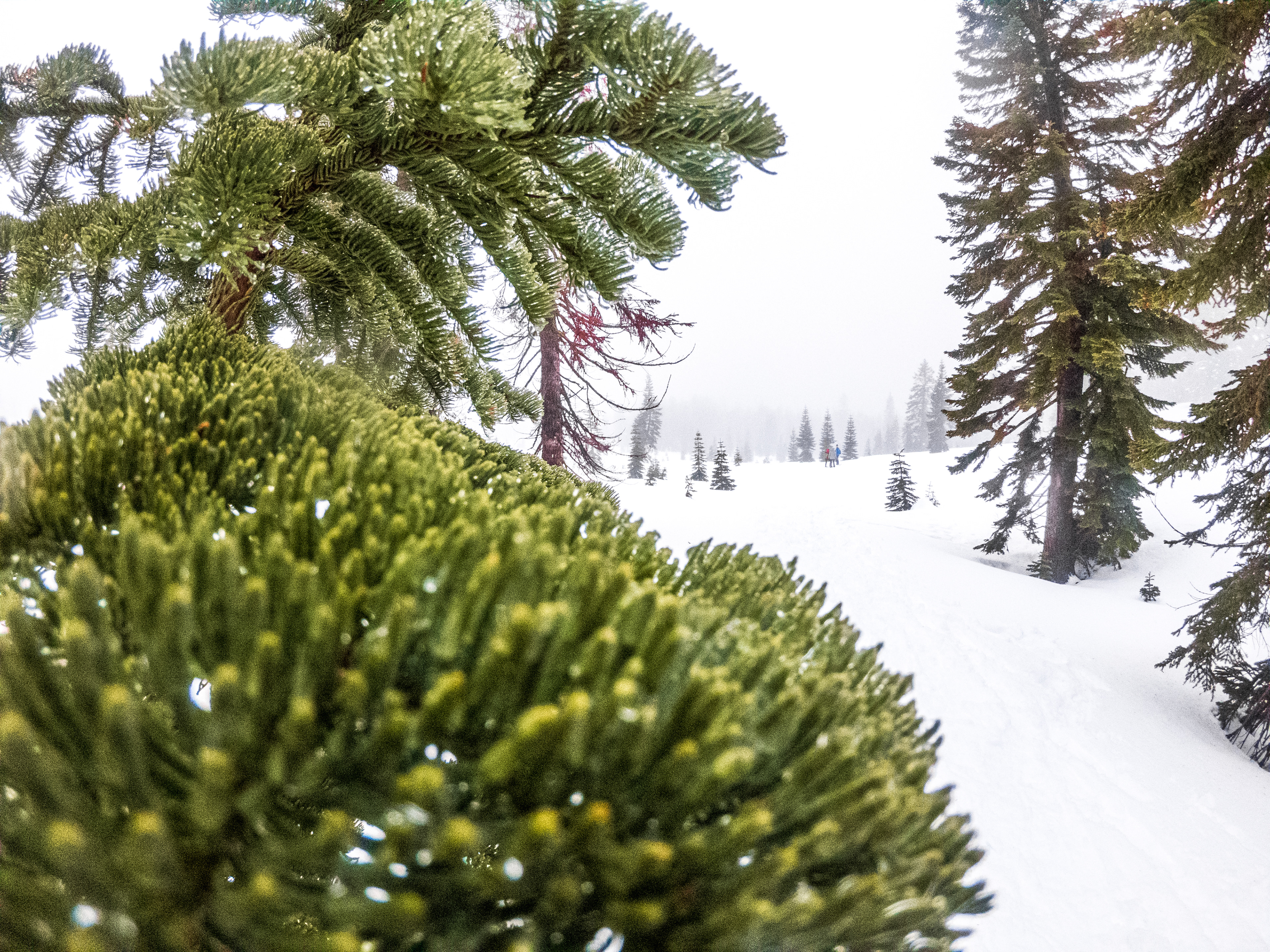
A Shasta Red Fir with a foggy forest in the background

Snowshoeing up to the cabin
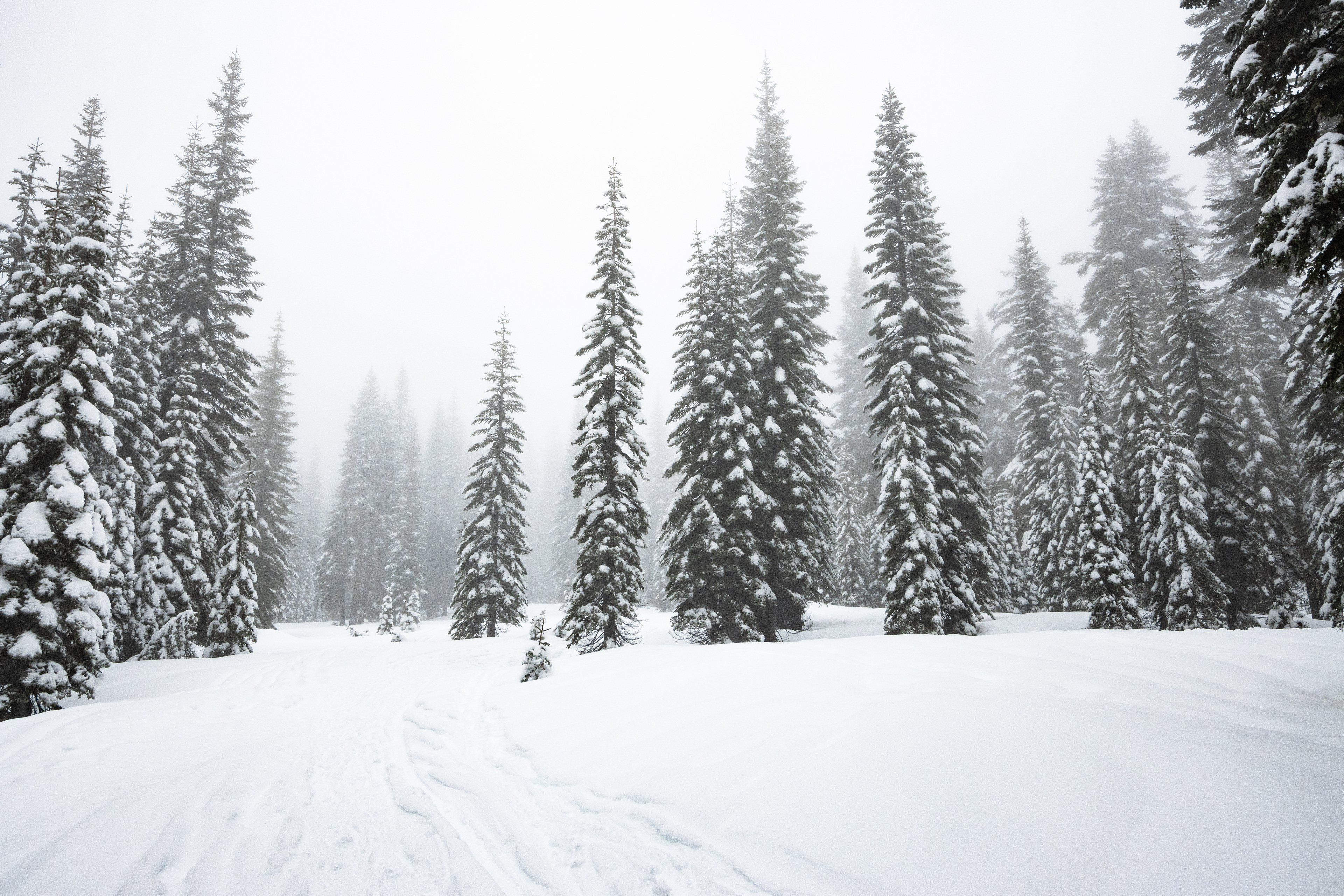
A snowy, foggy forest
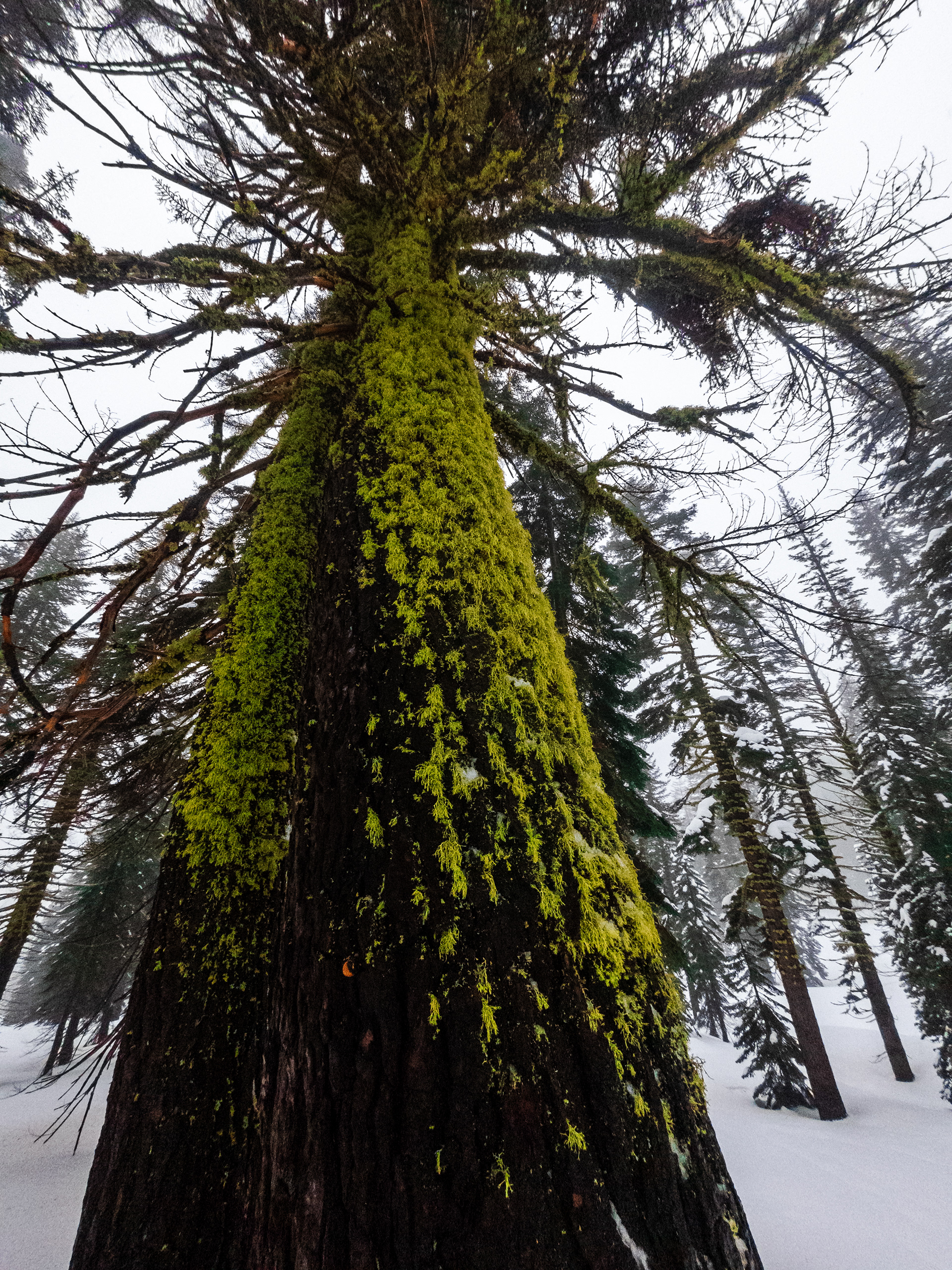
An old, giant Shasta Red Fir covered in lichen
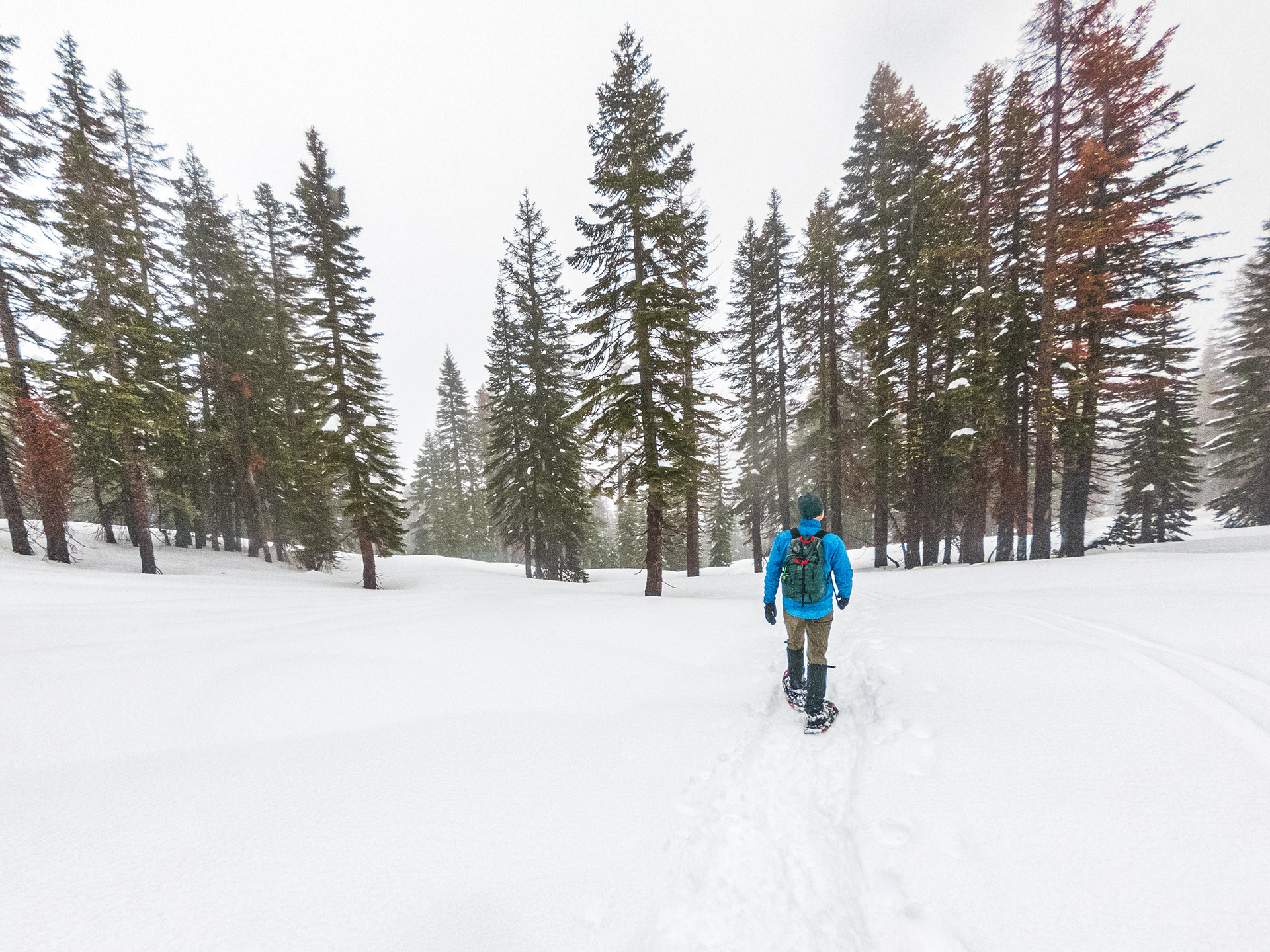
Heading back down
At long last, we reached the final full day that I would be up here in northern California. We started the day off with the long drive up to the Oregon border and the Lower Klamath National Wildlife Refuge Complex, a group of wildlife refuges that host thousands of waterfowl and raptors during the winter. We did our best to look out for birds as we drove along, but the lighting made it difficult to ID much. We were lucky enough, however, to spot a Ring-necked Pheasant, my second lifer of the trip. Eventually, we reached Tule Lake National Wildlife Refuge and stopped at the visitor center, which had a great collection of some of the best taxidermy I have ever seen. We also did a quick loop around the marsh behind the visitor center, which was beautiful in its own right and hosted a great selection of bird species.
From there, we headed to the Auto Tour, which winded between large man-made ponds and agricultural fields. We spotted dozens of ducks and plenty of raptors, including Northern Harriers and majestic Bald Eagles. It was a quick tour through the refuge but rewarding nonetheless. As we finished, we headed to our next and final destination of the day: Lava Beds National Monument.
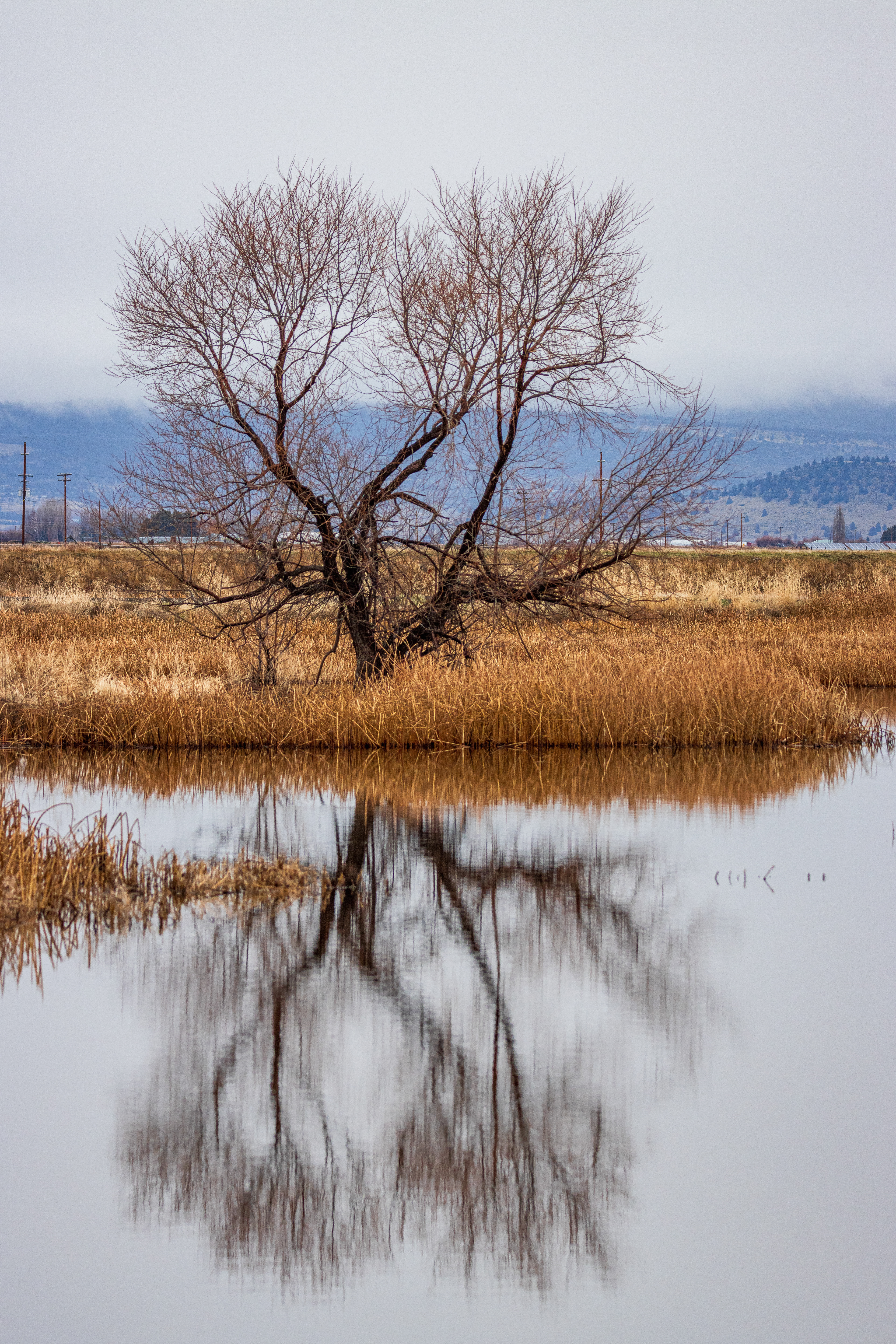
A bare oak tree reflected in the still waters of the marsh
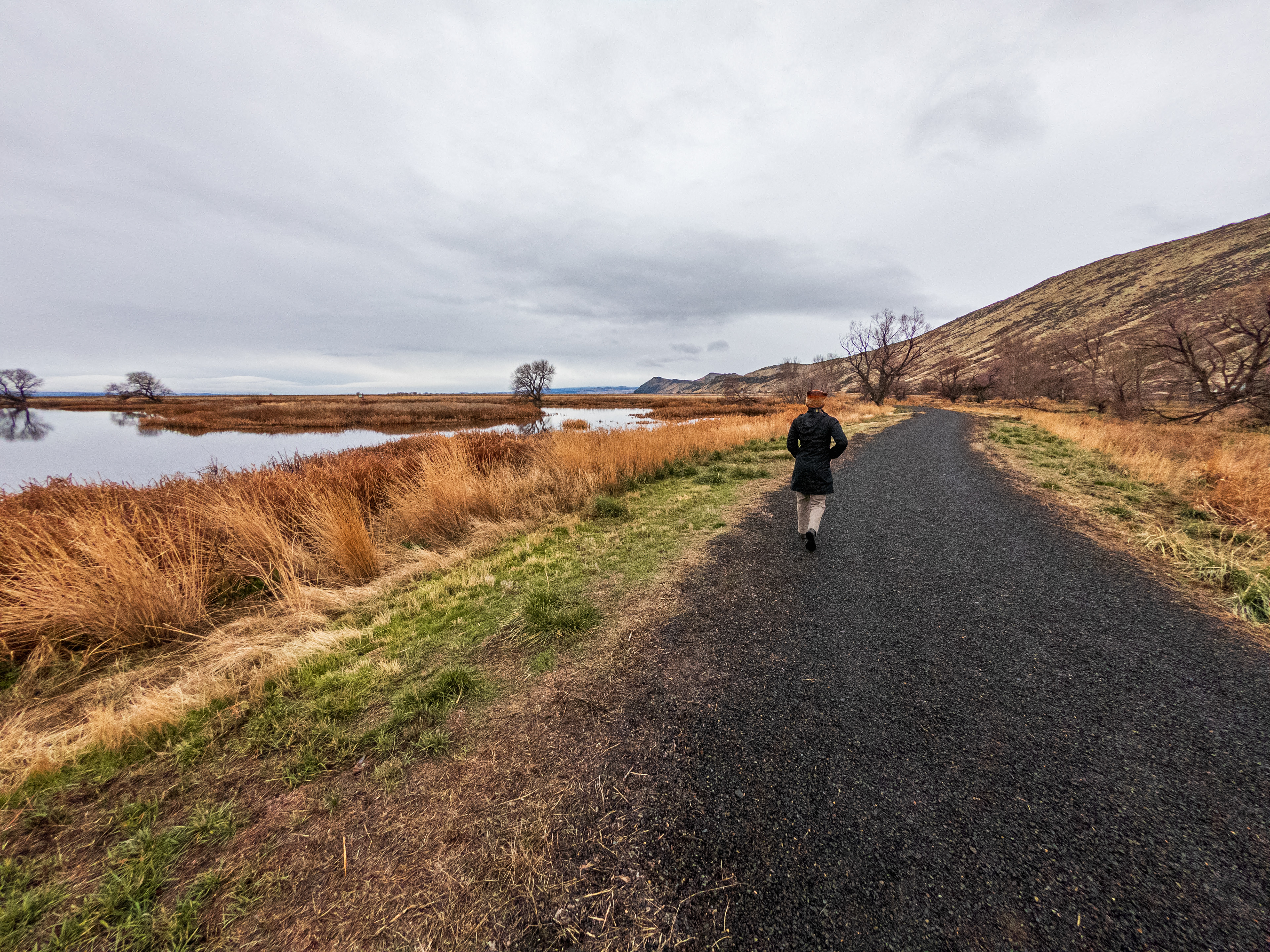
Walking along the Marsh Discovery Loop
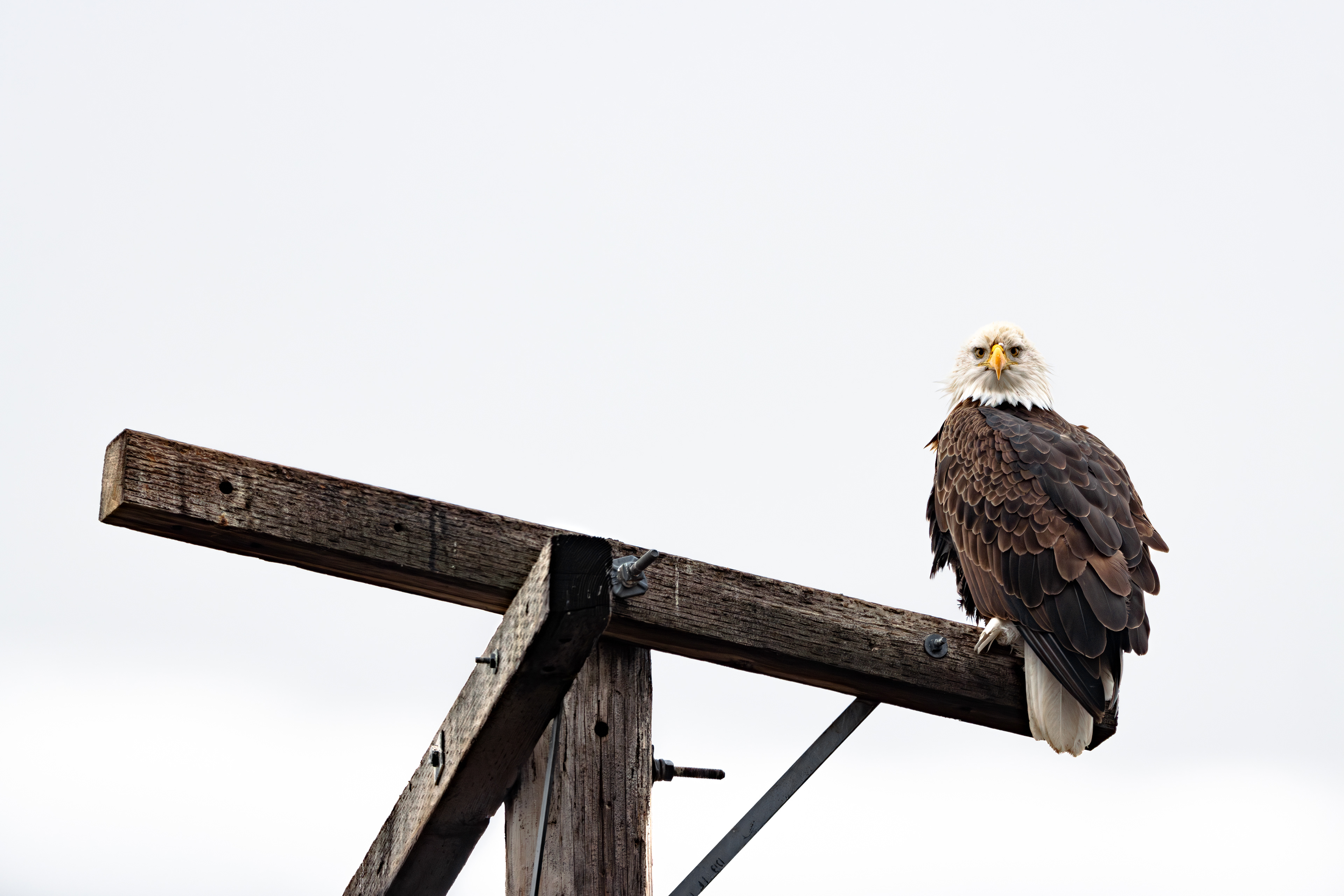
A Bald Eagle staring at me through the sun roof
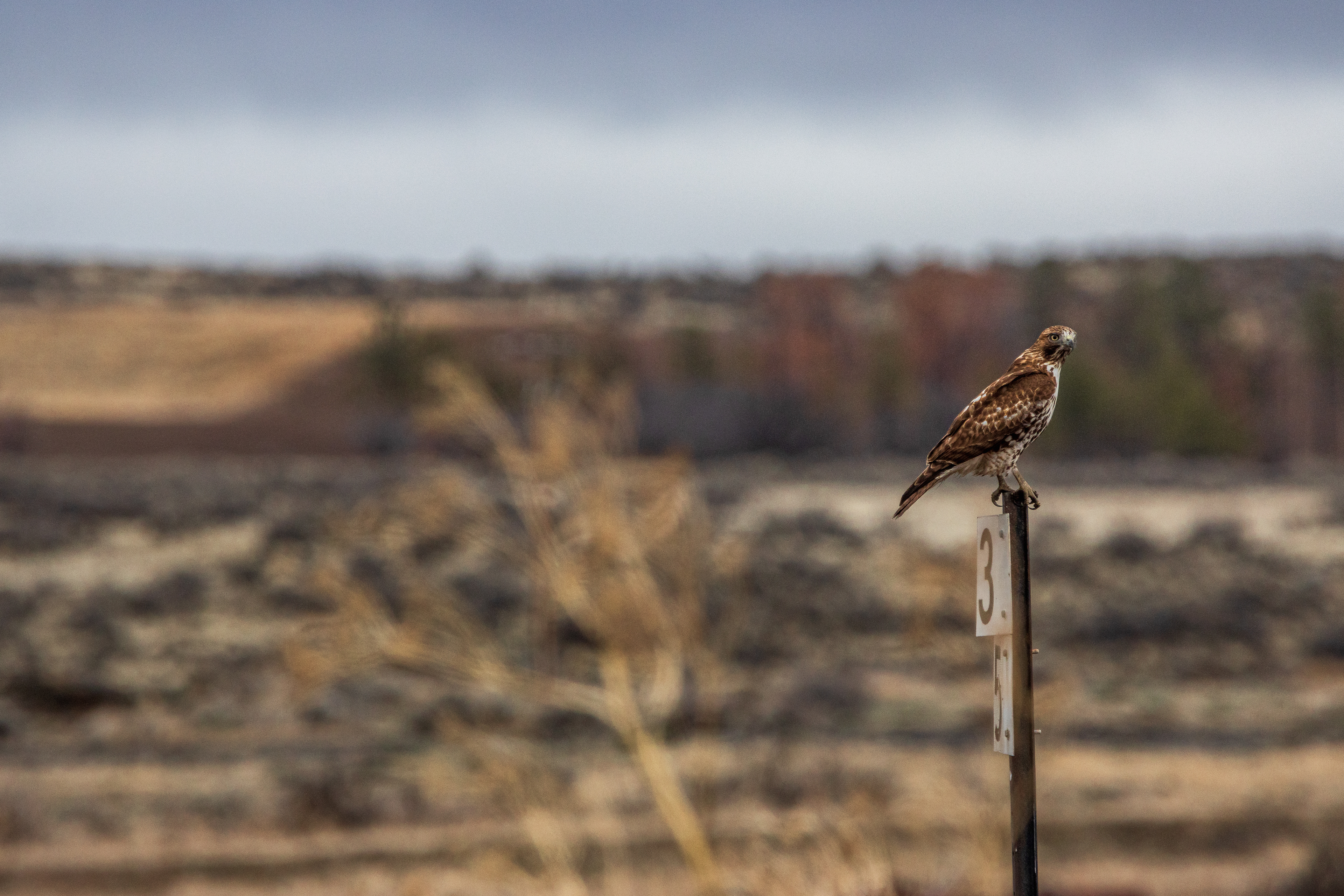
A Red-tailed Hawk perched atop a sign post
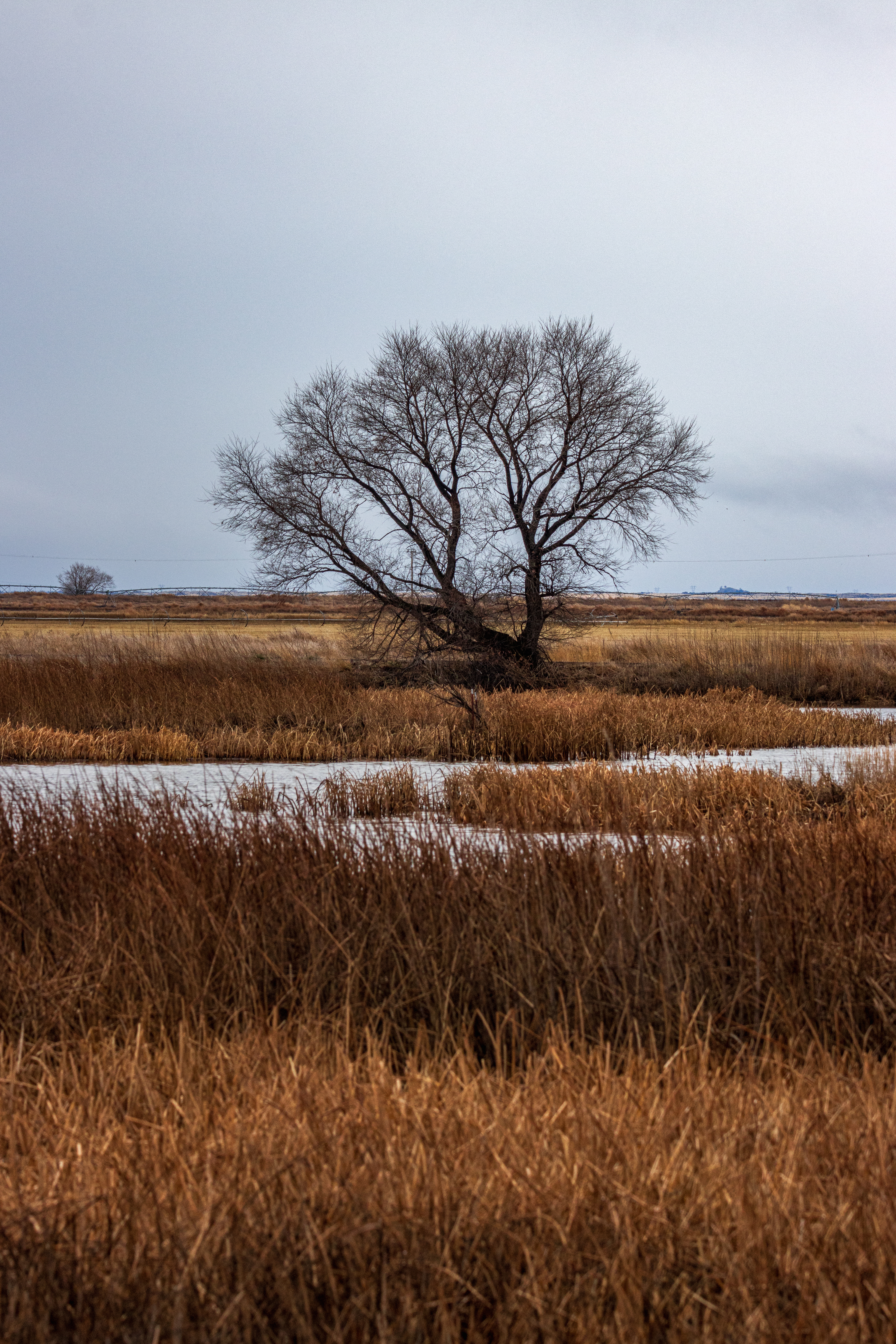
An oak tree towering over the cattails of the marsh
Lava Beds National Monument is a landscape shaped by volcanic activities. The landscape is covered in sagebrush and grasses, broken up by the occasional juniper or low, volcanic hill. The dark red and black rocks hint at its volcanic past. It's an incredible landscape in its own right, but what really draws people to this location are the dozens of lava tubes that lie just below the surface. We stopped briefly at the visitor center to get our caving permit and then headed for the caves. Our first stop was the Blue Grotto Cave, a long lava tube with numerous openings to the sky above and rich, bluish ceilings. After exiting the Blue Grotto Cave, we entered the Golden Dome Cave, which is renowned for the hydrophobic, reflective bacterial community that it hosts. If you shined your light in the right places, the cave glittered like gold, courtesy of the fragile bacteria lining its walls. Finishing the Golden Dome Cave, we reluctantly left the National Monument and headed home, though we were greeted with a gorgeous rainbow as we left the park.
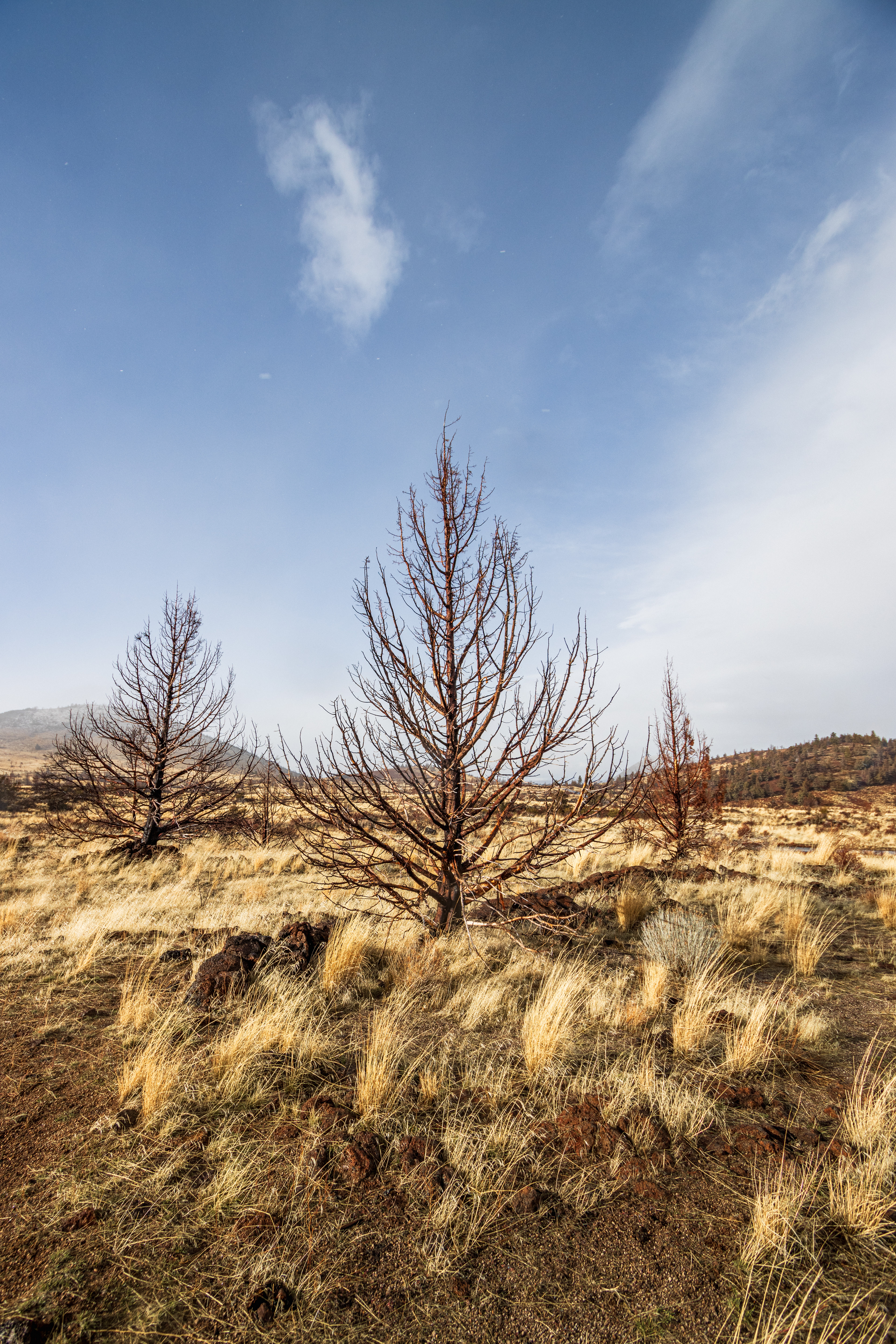
Burnt Western Junipers in the volcanic landscape of Lava Beds
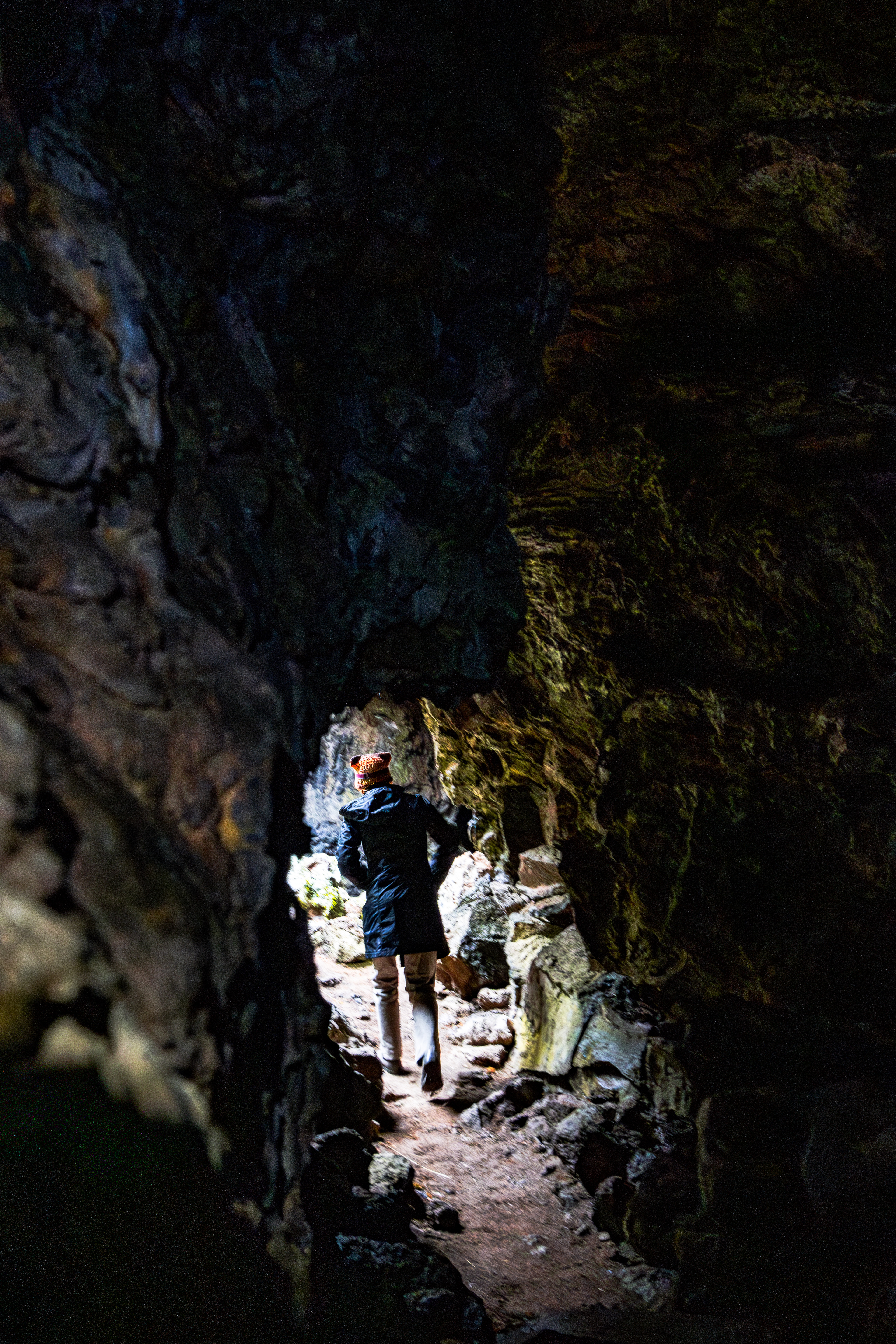
Hiking through the Blue Grotto Cave
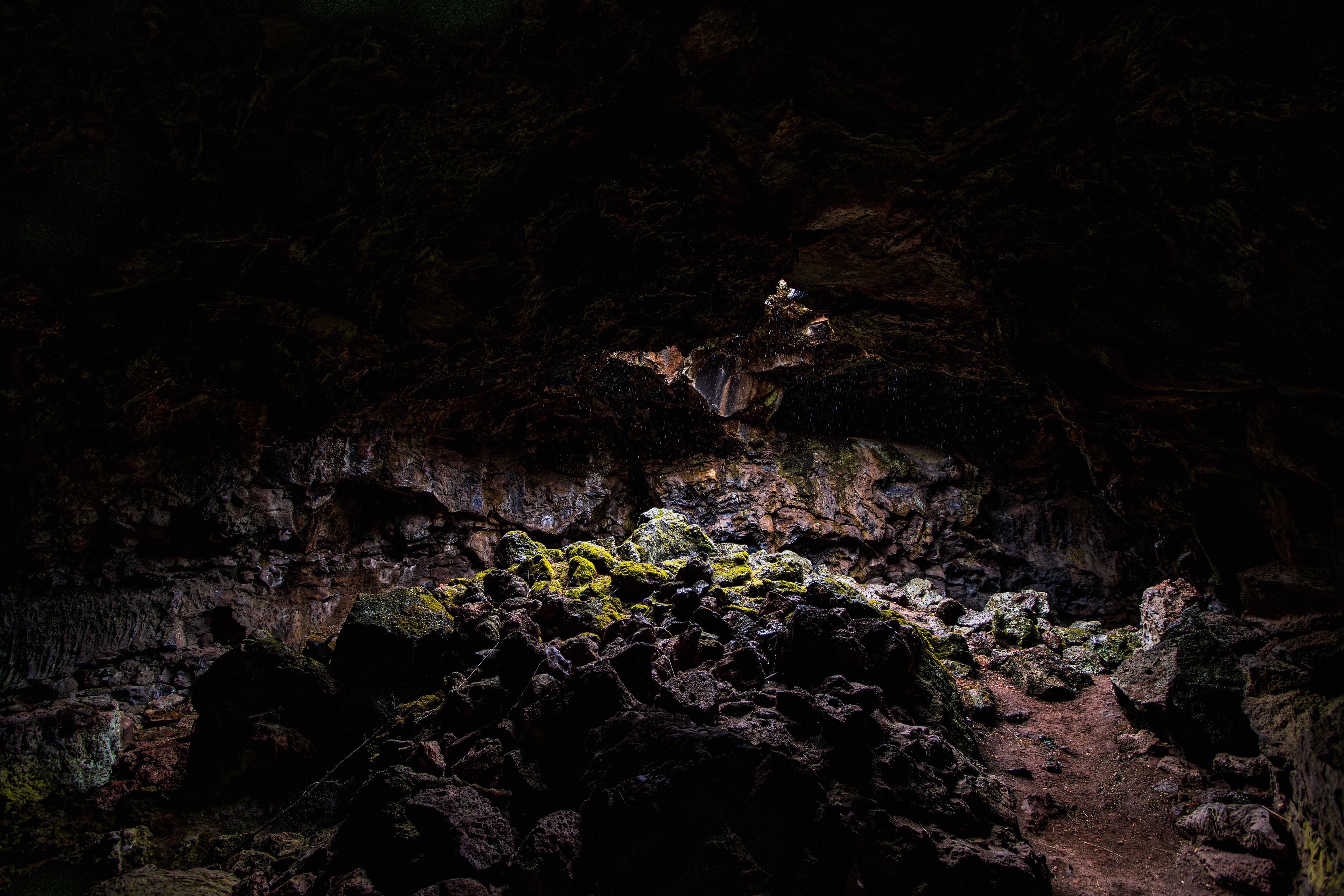
One of the many opening in the Blue Grotto Cave
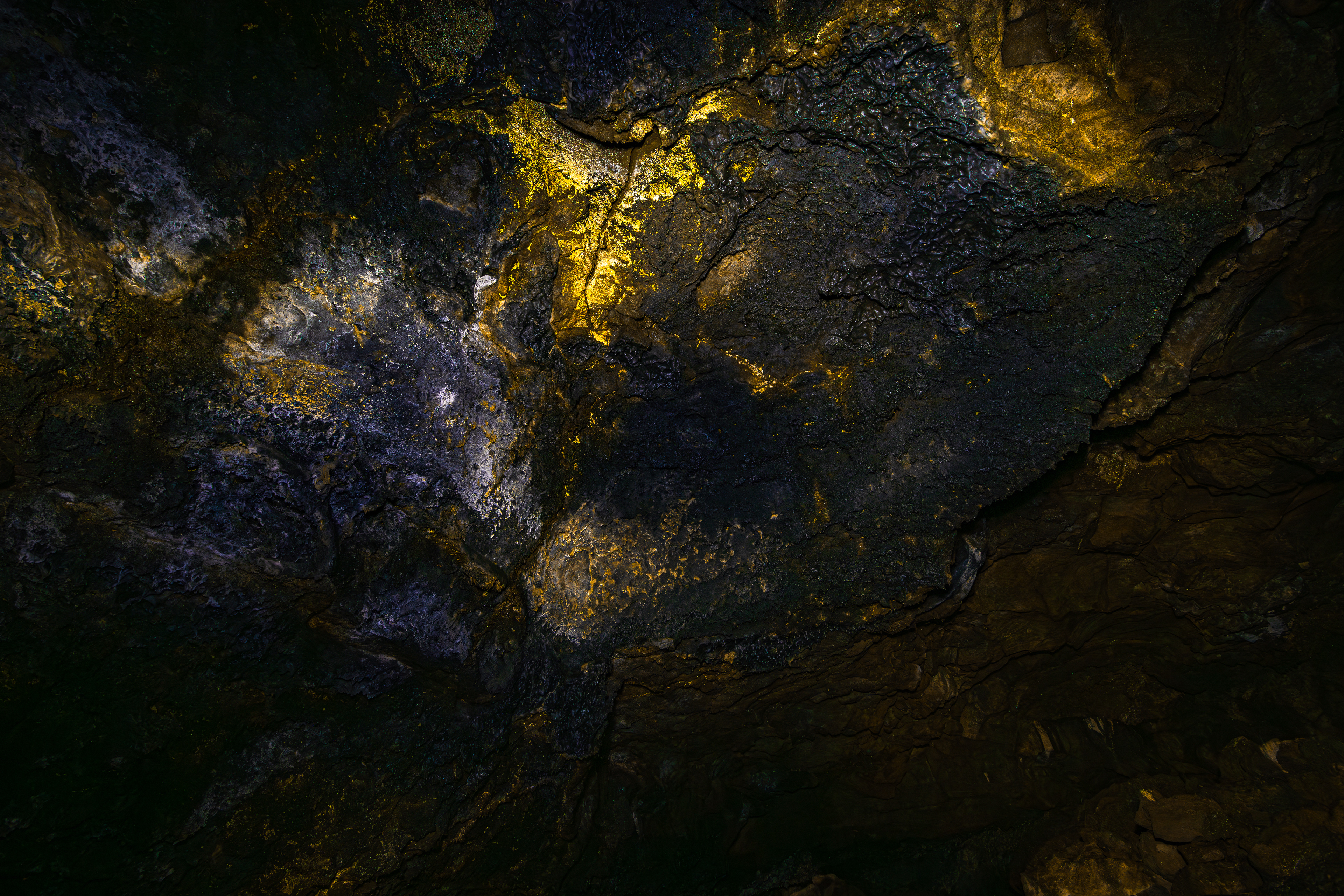
A few small pockets of the reflective, golden bacteria of the Golden Dome Cave
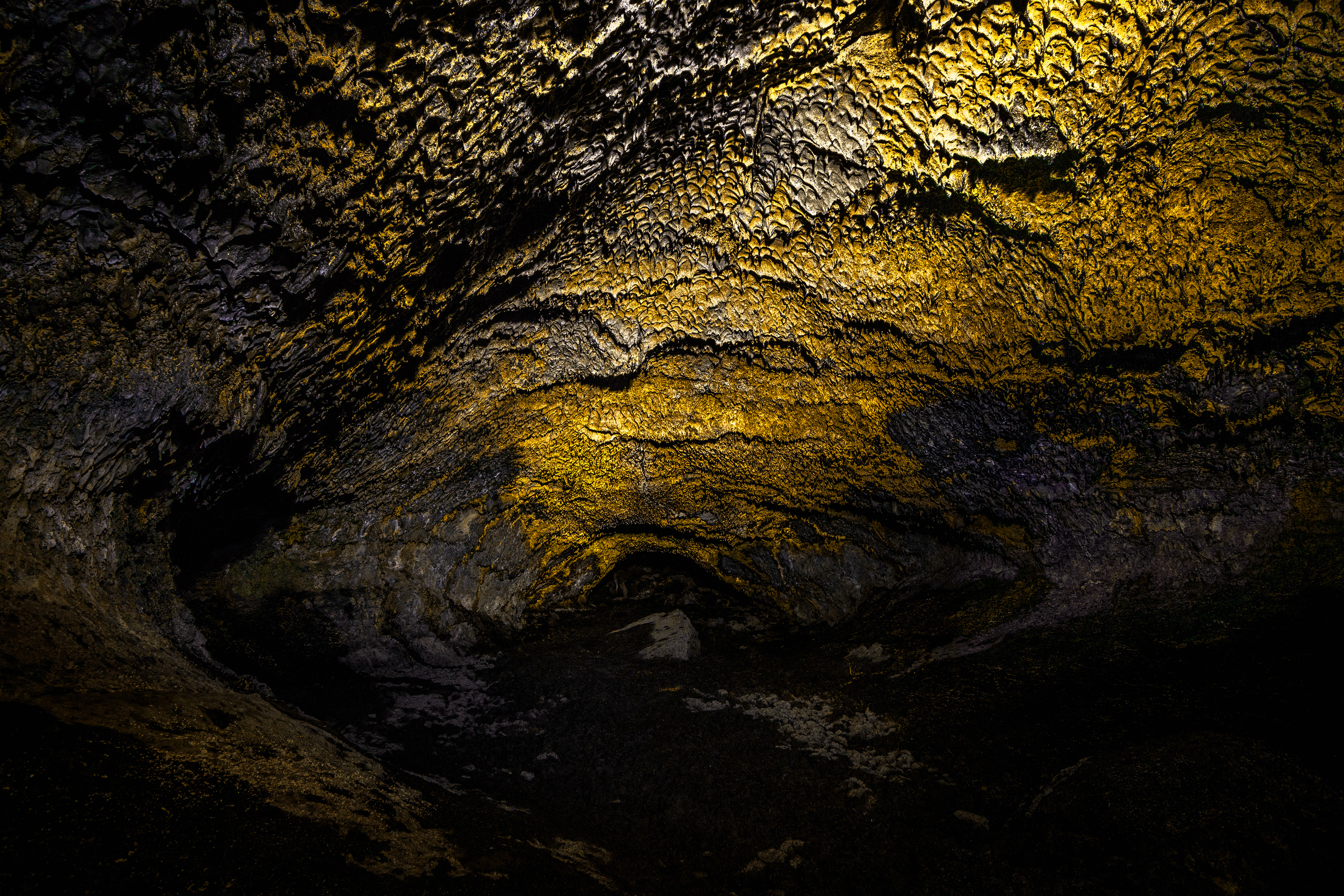
An entire chamber covered in the reflective, golden bacteria of the Golden Dome Cave
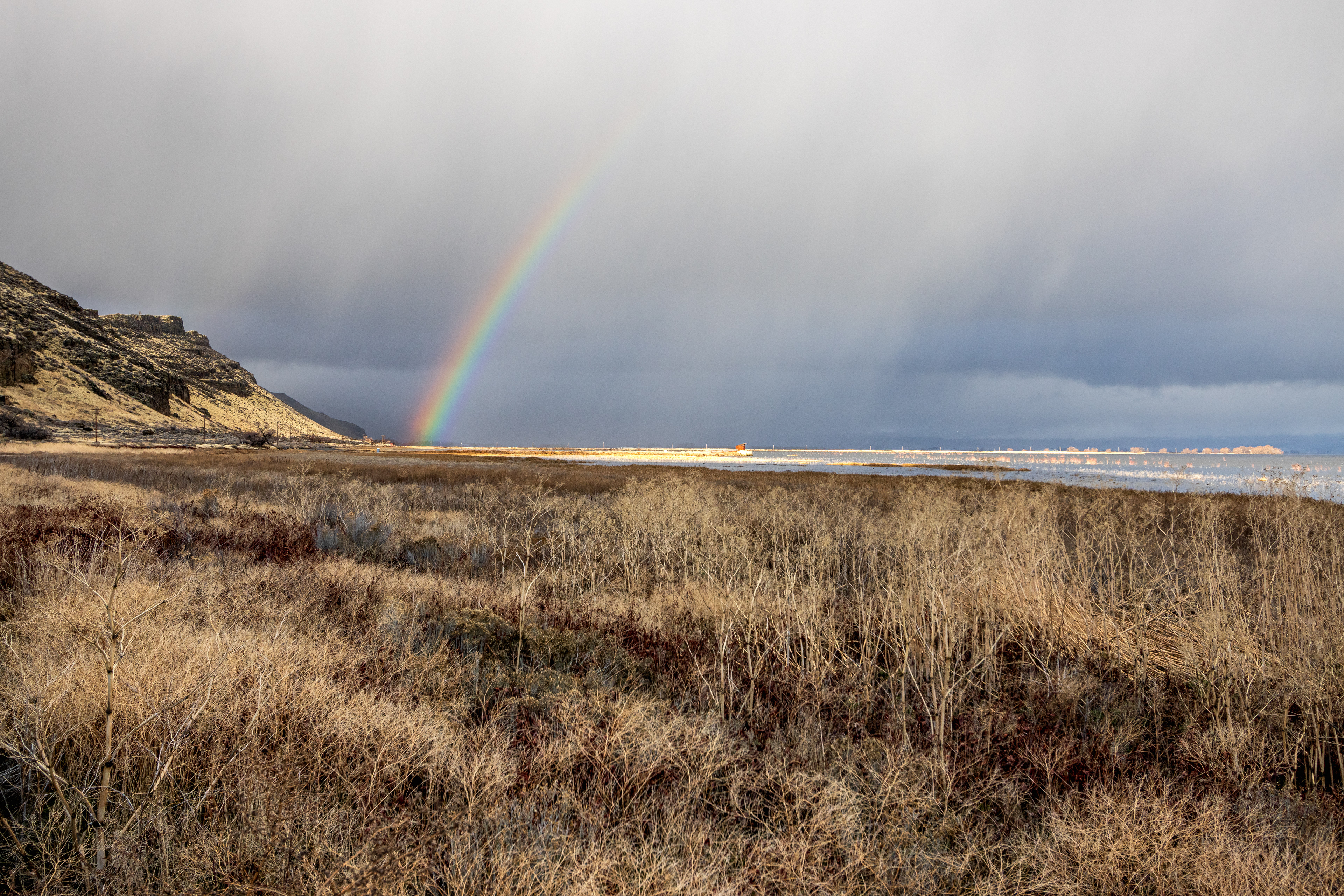
An enormous rainbow seen as left the park
The following day, I flew home, leaving Northern California. Before leaving, however, I took one last stroll around town looking for birds. The town didn't disappoint, presenting numerous different finch species and even a poor Say's Phoebe braving the cold on someone's porch. After that, it was a bittersweet farewell and the long flight back home.
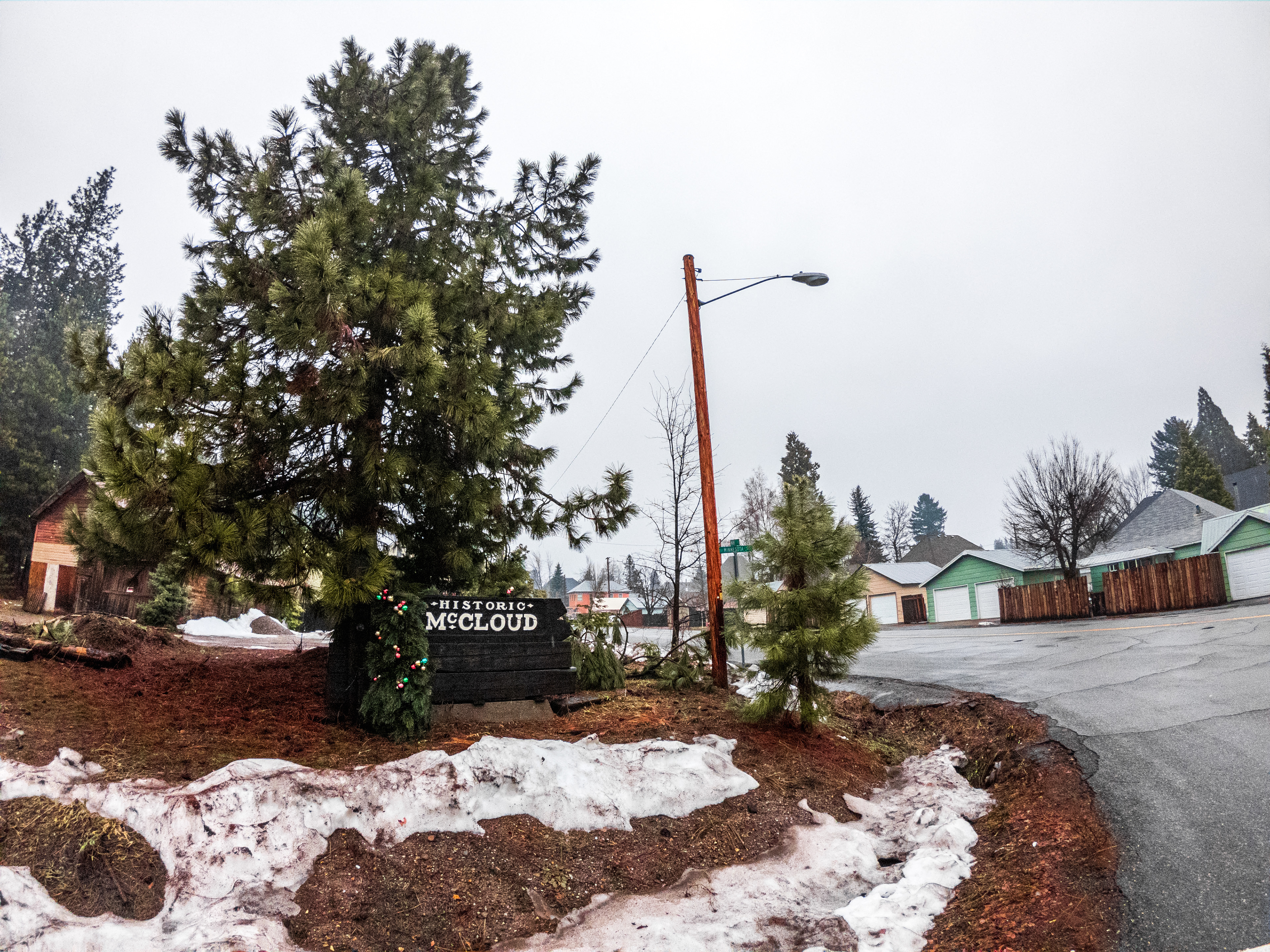
The sign welcoming you into historic downtown McCloud
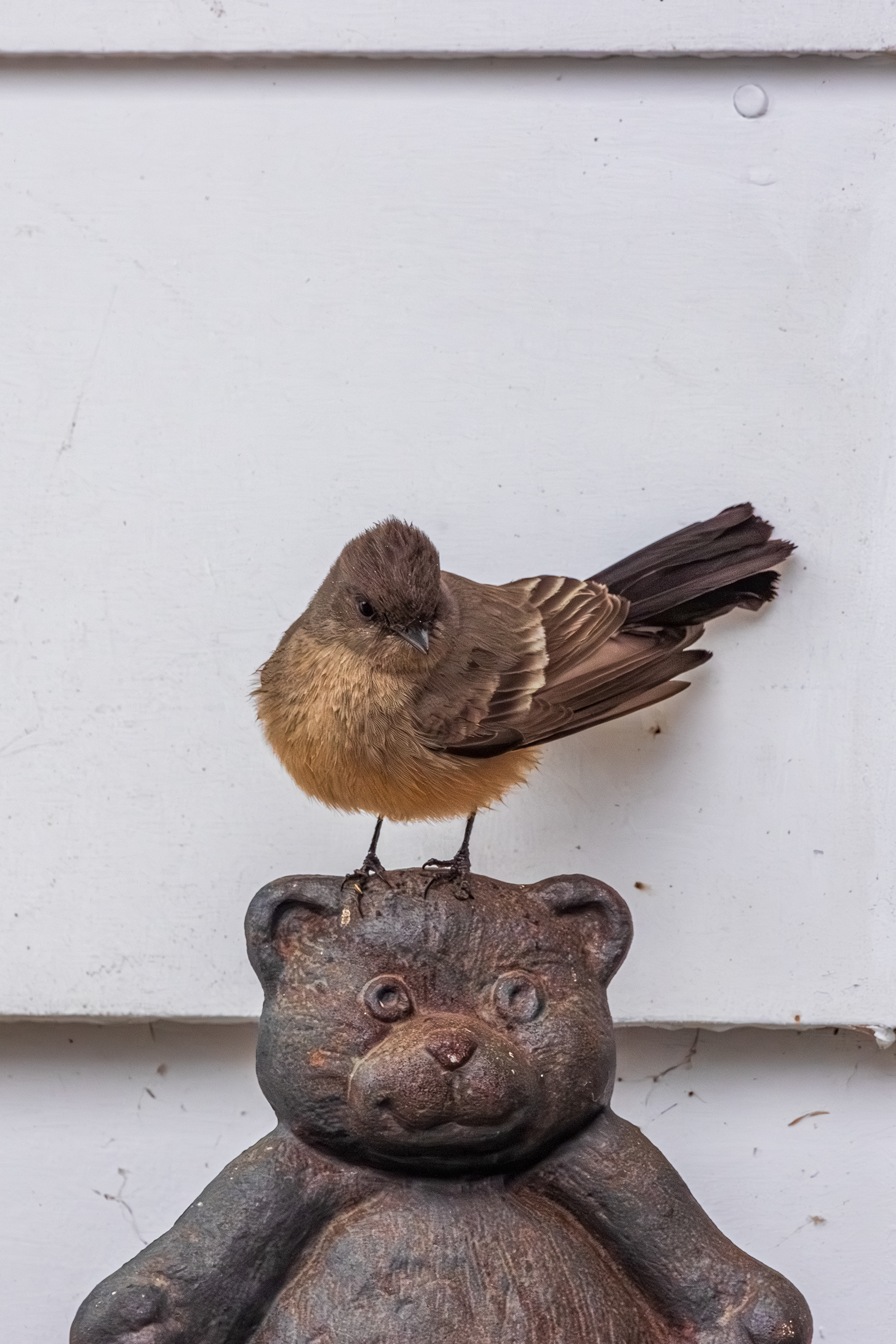
A Say's Phoebe atop a bear
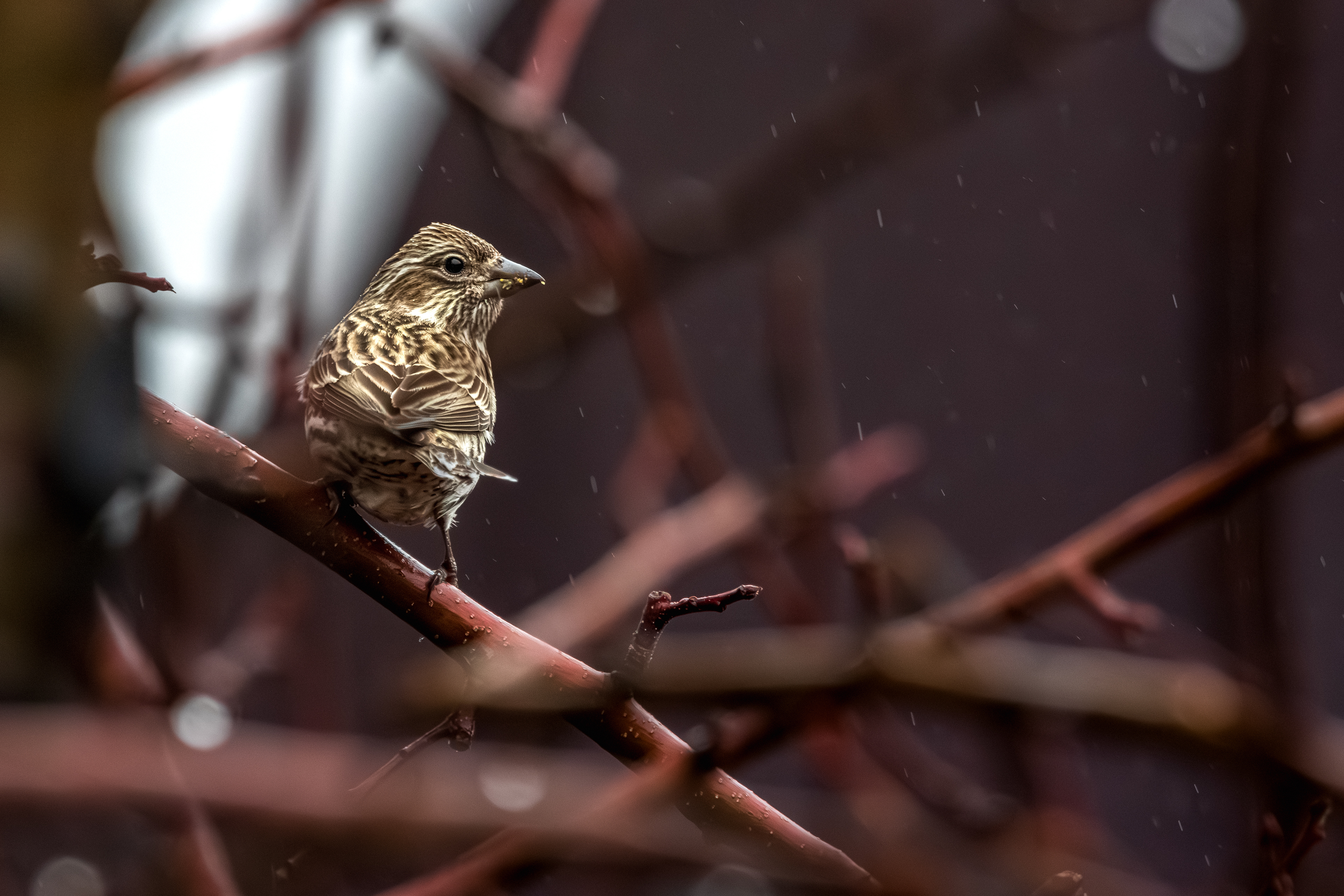
A Cassin's Finch in the rain
Thank you for reading about my time in Northern California and I sincerely hope you enjoyed the read. If you are interested in seeing which birds I spotted during this trip in more detail, you can find my trip report here: https://ebird.org/tripreport/314087.
